

Deserts as Ecosystems and Why They Need Protecting
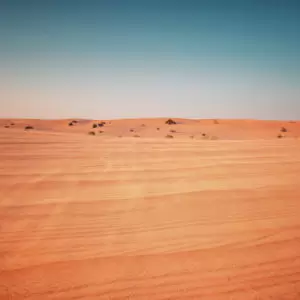
What is a Desert?
Deserts conjure up specific ideas about topography: typically, that they are dry and sandy dunes or rock, or a mixture of both. But deserts are far more than this and there are multiple types. How we define the desert biome are not about the types of rock, or the amount of sand, or even the temperature because there are both cold and hot deserts. The simple explanation is that deserts are topographic landscapes that receive little precipitation in a typical year. The threshold is 10 inches, or 25cm. But more than simply having low rainfall, a desert is “arid”. This means a high rate of water loss through plant reclamation (called transpiration) and through evaporation. These two aspects are combined into something called evapotranspiration. This is the amount of water that the landscape would lose when available (1) . For deserts, evapotranspiration ratio exceeds average annual rainfall by anything from 2:1 to 33:1. The higher the ratio, the less available moisture there is. The coarse nature of the soil means most moisture seeps through the top soil rapidly.
Furthermore, what precipitation a desert does experience is erratic. The average rainfall is just that. A desert may receive far more than the “average” in one year and not experience any rainfall the year before and the year after. Deserts will differ depending on their climate and location and their overall aridity can influence many things, not least of all the ecology, food chain, plant and animal types. High evaporation leaves behind higher salt levels, affecting further which plants can grow and the individual size and the numbers of herbivores that may feed on them and, in turn, carnivores. Some experience vast temperature fluctuations, especially hot deserts which may reach unbearable heat during the day and extreme cold at night (2) . This is because the rock and sand absorb heat during the day and releases it at night. There may also be an extreme variation between warm and cool seasons, including extreme winds and storms due to the mixing of cold and warm air.
Types of Desert
There are four broad types of desert: coastal, cold, hot & dry, and semi-arid.
Coastal Deserts
These are generally hospitable and don't have the extreme temperature fluctuation that other types experience. Life is more abundant here, the soil less acidic, and tend to be arid due to adjacent topography such as mountain ranges or lakes and waterway networks that draw off most of the precipitation that they would otherwise experience (4) . Coastal deserts experience a brief winter of moderate average temperatures of 5�C/41�F for winter while summer typical reaches an average of between a mild 13�C/55�F to warmer 24�C/75�F. The precipitation is lower, and this type of desert is better at retaining what little moisture it harnesses - on average around 5 inches or 13cm annually.
What isn't drawn off by mountains drains away from the porous soil to find its way into waterways a little farther away. An example of the coastal desert is the Namib.
Cold Deserts
Not the first thing that comes to mind when we think about deserts but located in the most extreme latitudes, they fall into two broad types:
- A long way from coastal areas and in a cold zone, receiving low precipitation
- In proximity to mountain ranges which draw away precipitation that might otherwise have created tundra or plains
Its annual precipitation falls as snow which may sometimes remain on the ground until the summer before it melts. If the temperatures don't rise sufficiently, it may remain for over a year. Their winters are extremely cold, typically between -2 and 4C (28.4F to 39.2F). Summer temperatures are pleasant and surprisingly warm, typically on average between 21 and 26C which is between 69 and 79F. Precipitation is relative and although fall and winter receives most of it, it is generally lower than other landscape types and it is insufficient to support too much life - hence why they are considered deserts.
An example of a cold desert is the Gobi (5) . Some feel that Antarctica's interior is a desert due to low precipitation.
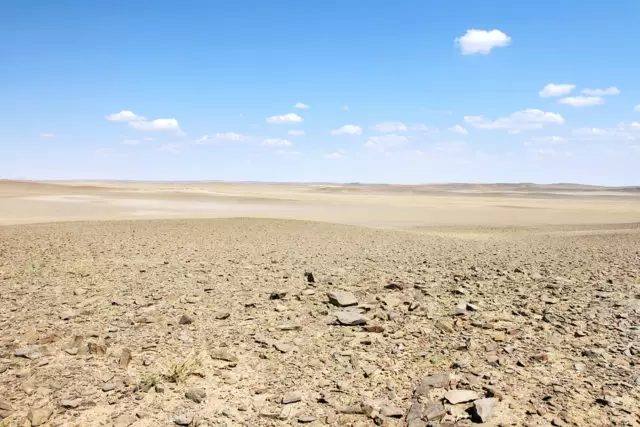
Hot & Dry Deserts
What we think of as the “typical” desert, usually indicated with the sand dunes of North Africa and the Middle East, isn't quite as empty, hot or bleak as we might think. While they do have hot summers (43-48C or 110-120F), the annual average is a much cooler 20-25C or 68-77F. Night temperatures are an average 10C or 50F. They also experience cold winters, a season in which the low levels of precipitation usually fall to -18C. Summer night-time temperatures drop considerably which is why the annual averages are so extreme. Surface albedo is high - heat acquired during the day is radiated at night. This type experiences no more than 11” (28cm) of rainfall annually while many experience even less than that. Evidence from The Atacama Desert, for example, suggests that some areas have never experienced precipitation. Their barren appearance is broken by the occasional tree; shade and coverage is rare, and this is where you are most likely to see sand dunes.
The Sahara is a hot and dry desert (6) .
Semi-Arid Deserts
Semi-arid deserts have, by definition, higher levels of precipitation compared to the other three types featured here, although not a great deal more. They are also not limited by temperature. They are milder generally, but they can exist farther to the north, meaning there are colder and warmer types. Daytime and nighttime temperatures are not as extreme, and neither are the divisions between summer and winter. There is some debate over whether they should be considered deserts at all but a type of plain or “steppe”. However, others argue that the other topographical features - of low precipitation (1-2” or 2-4cm annually) and high evapotranspiration leave them firmly in the desert category. Examples of colder semi-arid deserts include the Nearctic zones which incorporate Newfoundland and Greenland. Warmer examples are the Sagebrush of Montana and the Great Basin, and much of Australia's Outback (7) . Summer average temperatures are between 21 and 27C while rarely going above 38C as the hot & dry types of desert often do.
A Brief History of the Use, Study, and Conservation, of Deserts
In antiquity.
Deserts, despite a reputation in some quarters as a barren and useless wasteland or as problems to be solved, have been a way of life for many different peoples. Ancient Egyptian society began along the fertile banks of the River Nile which is buffered on both sides by hot & dry desert (8) which they saw as vital to their culture. Some attribute the arid environment of the Egyptian interior to the development of their complex culture and especially their rituals and cults surrounding death. It is particularly believed that the desiccated nature of bodies as found in the desert dying of exposure or from natural causes provided inspiration for their experiments and developments leading to the mummification process. Certainly, the dry environment of western Egypt where the pyramids are located would have been the perfect environment to prevent the sort of cadaver degradation seen in biomes with higher precipitation and humidity. Similar theories have been expressed about the development of mummification in the South American culture of the Chinchorro who lived in the Atacama Desert, quite possibly the driest desert on the planet (9) .
Even before this, the deserts have provided useful environments for resources and hunter-gathering. Various tribes of Native Americans made their homes in the deserts of North and Central America, as did the Kalahari Bushmen and Australian aborigines. Deserts are ideal for tracking animals and provide enough food in the right volumes to support hunter-gathering communities. It's no wonder we find so much archaeological remains in deserts. Firstly, they were well-used by people of the ancient past and secondly, the lack of humidity increases the chances of survival of organic material. Other cultures quickly adopted semi-nomadic lifestyle and took livestock with them on long journeys across the desert, learning locations of water and living off the animal produce, using animal skins as tents for shelter, and utilizing other parts of the animal such as milk, bones, and meat. Even today, peoples such as the Bedouin still roam the deep deserts of the planet although their lifestyle is more semi-nomadic (10) .
The Age of Exploration to the Modern Age
Successive civilizations harnessed the resources available in deserts for millennia, from mining to harnessing water supplies from springs into irrigation to grow crops, and stone, deserts have generally been seen as a resource. It wasn't until the early Middle Ages and the explorations the likes of Marco Polo that we begin to see wonder and observation in the desert biomes, particularly the Gobi (11) . This was part of the Silk Road, the trade route between the Far East and Europe which was vitally important to the Eastern Roman Empire and the Alexander's Greek Empire before it. By Marco Polo's time, the journey was well-established, but his writing was the first volume. Polo and his father were the first westerners to visit China's modern capital. He was famously appointed to the Chinese Royal Court. Today, Marco Polo is one of the world's most famous early explorers, inspiring the likes of Christoper Columbus and Ferdinand Magellan.
It would take several hundred years and the travels of Charles Montagu Doughty before any more important works were to come; his two-volume book Travels in Arabia's Deserts was published in 1888. He would later prove to be one of the most inspirational early travel writers to the modern age (12) . The work included many observations about deserts and their uses, functions, and the sense of wonder. It is valued as much for its vivid descriptions and beautiful writing as it is for its content. Slightly later Antoine de Saint-Exupéry utilized the new transport of flight to bring a new dynamic to travel over deserts; a plane crash in the Sahara almost killed him but he was found by Bedouins (13) . His travels in the Arabian deserts were extensive, as were those of Gertrude Bell - one of history's most famous female explorers. Yet her work could not hold a candle to the phenomenal work of Freya Stark (14) who published 20 books featuring the deserts of the Middle East. Other important figures in the early 20 th century include naturalist Uwe George who lived in several deserts for part of his life and poet Robert Frost who also explored them.
Eremology: Preservation of Deserts as Ecologies and Cultures
Until the early-mid 20 th century, interests in deserts was one purely of exploration and travel, as highlighted in the previous section. The birth of the science of eremology (the study of the desert biome) began in the mid-20 th century and with the dawning of the understanding of such environmental concepts as human geography, ecology, and, of course, conservation. It had been widely known thanks to various travel volumes that deserts were anything but lifeless wastes. One of the earliest remits of the United Nations was conservation. A growing problem in the 1960s concerning such issues as pollution and public health led to the development of a number of environmental standards and conservation issues for the assembly of world powers. UNESCO now has a chairperson dedicated to Eremology, such is the importance of the preservation of the desert biome for cultural and ecological reasons; as discussed previously, various peoples have lived in deserts for millennia and it remains an important part. This role has been in place since 1994. Today, researchers into the desert biome understand the importance of their conservation for these reasons, but also for biodiversity (15) and the unique biological makeup of such landscapes. Many species that live and thrive in desert environments do not exist in other biomes.
Yet eremology is also the study of how deserts are formed. As well as preserving the deserts that we have, it is also dedicated to ensuring that human activity such as climate change, agricultural practices, intensive resource use and other activity does not create deserts in other landscapes, ecosystems and biomes. The UNCCD (United Nations Convention to Combat Desertification) (16) now has a delicate balancing act between preservation and holding back desertification.
The Academic, Functional, and Ecological Importance of Deserts
Deserts as rich archaeological sources.
Some of our greatest archaeological finds have come from desert environments. As with anaerobic conditions of wetlands where organic material is cut off from microbes, such material survives in deserts due to the lack of moisture and bacteria that can eventually break it down. This is the reason for the survival of many pre-dynastic Ancient Egyptian bodies from shallow graves in the desert. Without the low humidity and desiccation, they are unlikely to have survived so well (17, p60) . These bodies predate the mummification process and therefore, no embalming fluid or removal of organs that degrade quickly as seen in the later industrial process of the complex society. The same is true with the mummies of the Chinchorro peoples of the Atacama (a cold desert). What is most remarkable about these mummies is that they predate the Egyptian society by some 2,000 years and they used some of the same techniques at times (9) .
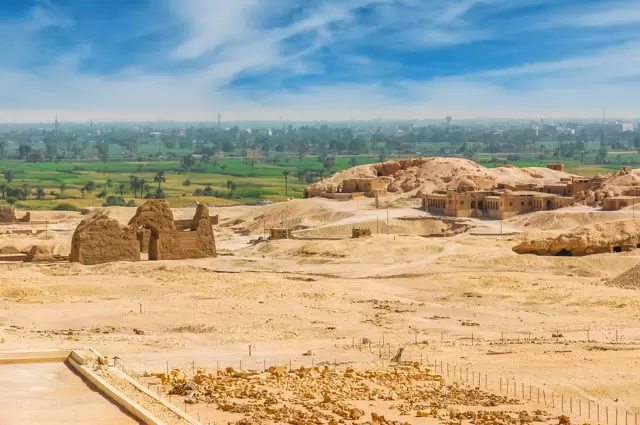
But the archaeology of deserts is about far more than simply the preservation of artefacts and their improved chances of survival. Various archaeological disciplines examine other areas of the desert.
- Desert Phenomenology / Experiential Archaeology : This is an archaeological approach that seeks to understand how people live in the deserts, their life experiences, and how they perceive their local environment(s). It includes their sensory experiences of day-to-day living
- Desert economy : Deserts have always been vital for resources and economy. Sand and stone have been used to build structures where wood is sparse as is the case with Ancient Egypt. But they are also sources of precious metal and gem mining
- Water : Deserts are areas of low precipitation and low humidity which seems in direct conflict to the requirement of water for all living things. It's a great source of examining technologies from the simple to the complex, of acquiring, harnessing, storing and preserving water and its supply. But more than that - what importance (practical or spiritual) do those people place on water?
- Deserts landscape archaeology and human geography : Particularly of the routes crossing deserts and the links between cultures within them, at the borders of deserts, and further afield. The study of routes can include migrations of people, when and how they move, the logistics of movements and regular pathways such as the Silk Road
Water engineering and mechanics are also of interest to archaeologists of desert areas. It's an interesting area of study that shows both human ingenuity and human potential for self-destruction. The irrigation of Mesopotamia during the first civilizations is one of the most remarkable feats of both. In the first instance, filtering water from the Euphrates and the Tigris rivers to the desert interior allowed for the building of enormous cities. The region, despite having lush valleys around and between the rivers, had much lower precipitation than Egypt which relied on annual Nile flooding (18) . Yet the irrigation that allowed for the civilization to develop was also its downfall as over-irrigation led to consistent crop failure as water evaporated, leaving behind salts that would eventually saturate the land (19) .
Desert Ecology and Biodiversity
The reputation of deserts as cold and lifeless is unfounded and it has arguably led to desert biomes being ignored in research literature compared to others (20) . Many certainly seem bereft of life, certainly during the day in summer in hot deserts when temperatures are potentially scorching, and winter in some cold deserts where subzero temperatures make life difficult. However, they are abundant with both flora and fauna. What is so great about deserts as biomes, is their unique biological profile. Species exist in these environments that simply do not appear elsewhere. The Mojave Desert is a case in point; it's one of the harshest environments on the planet with a humidity level that rarely goes higher than 40%, yet it maintains abundant biodiversity throughout the seemingly barren topography (21) . All species have adapted to live in this harsh environment and many are protected because of their geographical limitations and delicate ecological requirements of coping with the high temperatures and dry environment.
Typical botany include succulents such as cacti which do not have leaves like other species, but spines to protect the fleshy body of chloroplasts adapted to store water, and shallow roots to quickly absorb the little moisture that makes it into the topsoil before evaporating away or soaking through. Similar specialization is also true of fauna which have high water retention, do not have the capability to perspire, and tend to be cold-blooded and small. Larger animals and mammals are rare although this is not always the case.
- Kangaroos, for example, which live in the hot desert climate of Australia are warm-blooded mammals and must find shelter during the hottest part of the day to avoid overheating. They have, however, developed a great defense mechanism against extreme heat in that they lick their bodies and the saliva cools the blood (22)
- Camels survive well in deserts because of their high water retention and survive quite happily in temperatures up to 48C / 120F.
These are two rare examples of both warm-blooded and larger animals that live in hot desert environments.
But what about cold deserts? They have received less attention than their hotter or semi-arid counterparts. We do understand that as they are in the extreme latitudes, that means most cold deserts tend to experience periods (months) of continual dark in the winter and periods of continual sunshine in the summer. This too has an impact on local biodiversity. Like their hotter counterparts, plants must be drought resistant. But succulents do not survive in these environments because of the cold. The most common type of plant in cold deserts are grasses and they form in clumps on rocks and in areas where the little moisture is most abundant. Shrubs occur in some places and the types of plant you might see on scrubland, but this is rare. Trees are also rare with only a handful of species such as the camel thorn acacia in the Gobi (23) and the pistachio tree which grows in the cold deserts of Iran.
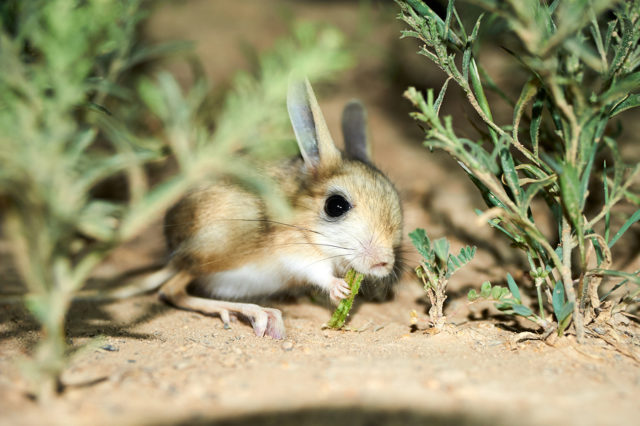
Animals in cold deserts are warm-blooded and larger than their hot desert counterparts. Typical examples include types of deer and antelope present in most cold deserts, sheep and goats likewise, and in South America llamas and alpacas. As far as carnivores are concerned, this is the realm of the wolf, the snow leopard, and jackals, depending on where in the world the desert is located. Small mammals are much more abundant and cold blooded reptiles are less abundant. In fact, scorpions appear in just one cold desert - the Iranian Desert.
Deserts as Climate Indicators
Desert is one biome type that researchers and conservationists do not want to expand all the while ensuring that the deserts we presently have do not disappear. The major reason for this is that desert is of low agricultural quality, low biodiversity, and an extreme environment. Climate change presents a risk of desertification of present marginal landscapes. We know this occurs from paleoenvironmental data (24) . Many of our deserts contain the remnants of ancient lakes, indicated by former water channels and preserved biotic and abiotic materials indicative of previous presence of water. As deserts are the most extreme environments on the planet, they are prone to the most change. Radiation is intense - both in terms of how much deserts receive and how much they reflect back into the environment. The expansion of desert can directly impact global average temperatures further, increasing water evaporation in adjacent areas. Even though the plant and animal species that exist in hot deserts are well-adapted to those environments, we know from studies that such organisms are treading a fine line over environmental tolerance; some are even at their limits, according to the IPCC (25) .
Both The Sahara and The Namib are extremely hot deserts and in recent years have experienced some of the hottest temperatures to date. Pakistan and Iran have also experienced record dry spells and high temperatures in the last decade. Even semi-arid desert climates are experiencing an increase in hot and dry spells, becoming more parched and experiencing wildfires in areas where scrub, brush and tree cover is more abundant. California, for example, has always experienced summer wildfires but the season for the fires is getting longer with the increased drought the state is experiencing. Continued drought, lowering precipitation and a dropping of the water table means plants cannot grow as abundantly. This creates a high risk of expanding desertification. The risks are highest in the 50�S-50�N range which is the latitudes within which the hottest and driest desert climates presently are (26) . Evidence demonstrates that the deserts of the Arabian Peninsula alone show increased water vapor feedback, much higher sensitivity, and increased sensitivity in deserts to greenhouse gas emissions. Simply, deserts become hotter and drier during a warming climate with wider implications for the warming climate. That makes this type of biome one of the most useful types for understanding and tracking climate change now and for the future.
Desert Resources
As well as biodiversity and their cultural significance, deserts are also useful economically due to their unique geological profiles or their environmental formation processes. The desert biome is one of the most important. There are 15 mineral deposit types on our planet and 13 of them are found in deserts. This makes the desert an important place for mineral resources and for local and global economy. The reason this is the case is how water leaches through the ground or through evaporation so quickly that mineral deposits are left behind. We discussed the problem with irrigation in Mesopotamia in the archaeology section where increased salt deposits made agriculture more difficult. This is a similar but natural process and it leads to the formation of large metal deposits in particular. Typical mineral resources found in desert regions (both hot and cold) include salt and borates, and gypsum. Borates occurred in high density in the Great Basin Desert here in the US. From there, borate was taken to Death Valley to the emerging railroads and all over the country (27) . This special kind of salt is used to manufacture glass, enamel and other ceramics, and in the pharmaceutical and agrichemical industries. All of it was mined from the dried beds of paleolakes that once existed in the region. It is estimated that the value to the US economy of borates alone has topped $1 billion. The US deserts are also home to copper.
Salts have also proven a great resource for the Chilean economy although today its lithium resources have also taken prominence on the world stage as battery development increases for better power storage and production in the new generation of electric cars (28) . No other desert has as much abundant salt as this desert. It is estimated that during the First World War alone, some 3 million metric tons were mined. Like the US deserts, copper is present in Chile. Australia's deserts are a source of lead and zinc, uranium, gold and silver. As far as non-metal resources are concerned, deserts are also home to clay, beryllium, pumice (where there was past volcanic activity), nitrates and lithium. It is also no great surprise that some of our most abundant oil deposits are found in desert regions, particularly the Middle East, central and South America, in the driest places on Earth. These were once marine environments, but the lakes and seas dried up, allowing for the chemical processes that turn organic material into crude oil to create enormous deposits. Oil is not unique to dry environments though and the most important process is the presence of organic material and the right chemical conditions.
Deserts as a Way of Life
There is some debate whether the Bedouin tribes of the Middle East are true nomads in the traditional sense. They certainly perceive their lifestyle in this way although technically they live a semi-nomadic life. In summer, they settle on lands bordering deserts where agriculture is possible and food crops for livestock is abundant. They tend to move around a lot more in the fall and winter time during the rainy season (29) . There are different groups of Bedouin tribe who name and classify themselves based on the types of livestock and animals that they rear. For example, there are camel Bedouins which comprise the largest tribes and are distributed over the widest areas of the Middle East, incorporating most of the Levant (Jordan, Syria, Iraq) the Arabian Peninsula and North Africa including Egypt, Libya and Sudan.
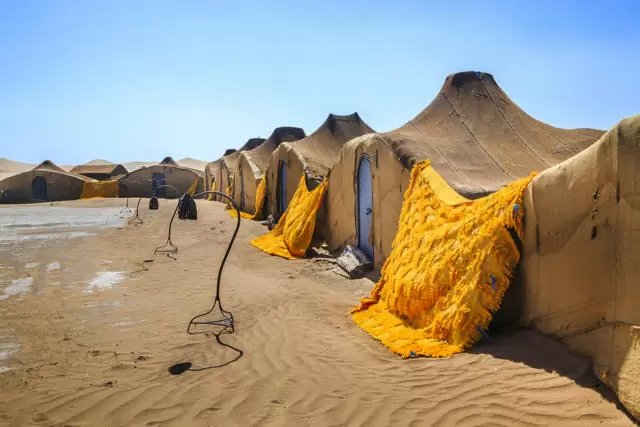
Much of their lifestyle is unchanged since the Bedouins first roamed the lands although not completely. They have adapted to many aspects of modern life including motor vehicles to move around where possible. Just as the technologies of Bedouin tribes have changed, so have the concept of a home which can be a tent, a stone building or even the desert land (30) . They are ethnically Arab, and most are now Muslim. Relationships between other ethnic Arabs and Bedouins has always been mixed. They have sometimes suffered horrifically at the hands of national governments while some Arab people perceive the Bedouin as “pure” or romantic much in the same way that other countries romanticize other lost traditions such as the Roma travelers of Eastern Europe or the Amazonian “lost” tribes who have only had limited contact with the outside world. At the end of the 20 th century, less than 1% of the population in countries where Bedouins still roam maintain that lifestyle.
The Bedouin are not the only nomadic or semi-nomadic life. The Marsh Arabs so brutally oppressed by Saddam Hussein in the early 1990s were semi-nomadic, as are some elements of the Kurdish peoples of southeastern Turkey. Some aspects of Mongolian life in the Gobi Desert, and the Sami people of northern Scandinavia and the arctic islands such as Svalbard continue in their semi-nomadic traditions. Like their counterparts to the south, they too are increasingly moving to permanent settlement.
Desert Topographical Functions
Deserts are vital in many ways ecologically. Firstly, they are home to 17% of the human population who have adapted or adapted to the various desert biomes. Water is vital to life and although they lack this necessary resource, their unique ecosystems provide survival and resources for the plant and animal species that live there (31) . Deserts carry out vital planetary environmental functions too. Most of these species have adapted to the uniquely harsh environments of both hot and cold deserts and everything in between. Often, these species do not exist in other types of environment. For that reason alone, it's necessary to conserve desert spaces and to avoid encroaching on them unnecessarily or altering them for other purposes. They are home to various livestock such as camels, goats, and antelope that provide food and livelihood for people. Desert shrubs and trees that produce fruit such as dates, figs, and olives (32) , are important food crops globally.
Many are not aware that deserts are a net carbon sink, providing some relief from the increase in greenhouse gases. This will be problematic while carbon emissions continue to increase, and world governments will need to do something about it in the future. The discovery was made when researching bacteria in the desert. Research suggests that bacteria located in massive aquifers beneath the sand and in the sands itself, are capturing carbon from the air. In theory, the aquifers could hold more than the entire global population of plant material at present at 20 billion metric tons (or 22 billion imperial/US tons) (33) .
Finally, deserts, due to their location, are important sources of generating renewable energy . It is no coincidence that the world's solar arrays are located in the hottest places on the planet. Smaller solar panels convert light into energy, but the large arrays in the deserts work differently. They harness the heat and use mirrors to reflect and divert into the array, to generate much more energy per square foot. Deserts are also useful sources of wind power. There are always desert winds, but at certain times of the year wind is much higher which can also generate energy (34) .
Leisure and Tourism
Deserts attract millions of visitors every year. From the deserts of the Middle East and North Africa where visitors may see the Great Pyramids of Giza in Egypt, to Jordan's city of Petra, Carthage and others, they are great places to see well-preserved archaeological ruins of the past. Here in the USA, there are plenty of other examples of ancient cultures in the desert. The Chaco culture, Pueblo peoples such as the Anasazi and Hohokum lived in the deserts of modern New Mexico, Utah, and Arizona. The Anasazi houses at Mesa Verde is incredible site, as is the Casa Grande monument in Arizona, built by the Hohokum Culture. In South America there are many sites and artefacts recovered from the Atacama. In short, people have settled deserts for hundreds of thousands of years and the dry nature makes such remains attractive to visitors (35) .
Not that culture and history is the limit of desert leisure and tourism. Some visit to see natural wonders such as Grand Canyon in Arizona, the great salt plains of the Atacama Desert or take a 4x4 vehicle or a hot air balloon ride across the sand dunes of the Arabian deserts. The semi-arid Monegros Desert in northeastern Spain plays host to an annual music festival called Monegros Desert Festival while the cold and arid landscapes of Greenland and Iceland draw visitors from all over the globe. The wide-open spaces of deserts can host great numbers of people without putting too much of a strain on local infrastructure. Despite the strain that tourism can put on these delicate ecosystems, they are providing much-needed money and jobs to areas. Ecotourism is helping developing nations especially find ways of preserving those landscapes (36) when historically, deserts have been neglected both in the conservation debate, and the funding and planning.
Seven Continents: Seven Deserts
Africa: namib (coastal).
Geological data suggests that at 43 million years, the Namib Desert in southwestern Africa is the world's oldest desert, but by no means its largest (that would be the Sahara). Most remarkably, nothing has changed there for some 2 million years, surviving multiple Ice Ages (37) . It consists almost entirely of sand dunes and gravel plains and is one of the most inhospitable places in the world and it runs right up to the South Atlantic coast. It takes up almost half the surface area of Namibia. It's long history and dry environment makes it a perfect searching ground for archaeologists and anthropologists; it's home to some of the oldest cave art in the world, preserved almost perfectly due to the desiccated conditions. Twyfelfontein is overshadowed by Brandberg for cave art, but the richness and diversity attract tourists and researchers alike (38) . It's hardly surprising that people settled here; Twyfelfontein contains one of the deserts few natural springs. The Namib Desert contains several national parks and reserves which home several species of zebra, jackals, and hyena. These warm-blooded mammals are in a precarious position due to the heat and dryness of the environment. Yet not all the Namib is desert. While the north is dry and sandy, the south is more like a semi-arid region with succulents, and the central region is full of gravel and gypsum plains.
Antarctica (Cold)
The world's last continent is subject to international treaties that no single country can claim it. Yet most developed nations have scientific settlements on the cold, dry and mostly inhospitable land (38) . What little life there is clings to the boundaries of where the land meets the sea and a few rocky outcrops. This includes penguins, albatrosses, seals, some species of gull and tern, and many types of insect . The interior is a different matter entirely. Covered in year-round snow and ice which is, in places, nearly 2km thick (1.2 miles) it is surprisingly one of the driest places on Earth. There is little precipitation and the snow and ice present has built up over hundreds of thousands of years. Rather than four seasons, it has just two: summer where it is always sunny where the sun never sets, and winter where it is always dark and the sun never rises. It's at the pole, so experiences the most extreme conditions of the planet. This especially means the temperatures. In 1983, the Russian Vostok Station recorded the coldest ever temperature on planet Earth at -89.2 �C (which is -129�F). In 2010, satellite data appeared to suggest a lower temperature than this was recorded but it was never confirmed or backed up by other data (39) .
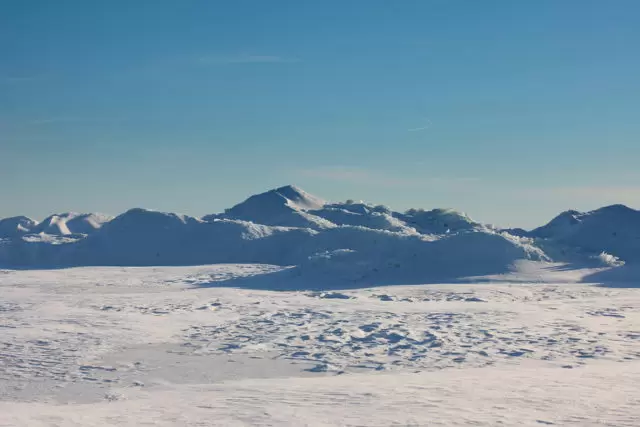
Asia: Gobi (Cold)
Straddling China and Mongolia, the Gobi Desert is Asia's largest. There are steppe and mountains to the north, more desert to the west, plateau and plain to the south. Its fame lies in the being the center of the Mongolian Empire which conquered much of Asia and into Eastern Europe in the Middle Ages. It's creation as a desert is largely one of unfortunate topography; it's formed by something called “rain shadow” (40) . The plateau and plains to the south draw off moisture from that direction. The Indian Ocean is a hotbed of rainwater during monsoon season but the Gobi sees none of it. It is a cold desert, but it is largely sandy. This creates a striking and unusual sight during the coldest periods of frost-covered sand dunes. It experiences most of its moisture in the winter which arrives in the form of snow run off. Its summer is hot: hotter than most other cold deserts with temperatures reaching up to 37C (or 99F) while the coldest temperatures recorded are around -32C (-27F).
The Gobi is useful for archaeologists as with any desert, but it's also been one of the richest sources of fossil findings for paleontology including the first evidence of dinosaur eggs (41) . It's home to many modern protected species including snow leopards, wolves, multiple species of camel, gazelles, and polecats amongst others. The Gobi is home to some of the world's largest copper mines, some of which have been steeped in controversy. There are few better examples of the ecological dangers of desertification in the 21 st century. Its continued expansion has been put down to increased carbon emissions, agricultural activity and deforestation. The Gobi formed naturally, but it is humanity fueling its expansion (42) .
Australasia: Gibson Desert (Semi-Arid)
Not the largest of Australia's deserts (that's Great Victoria Desert), Gibson Desert is considered one of the most interesting because it is largely pristine (43) . It's amongst the purest deserts in the world. The semi-arid landscape is located between a giant lake of salt (Lake Disappointment) and two other deserts (Great Victoria and Little Sandy). It's largely a gravel bedrock base and the most abundant plant is grass, typical of semi-arid deserts. The red sandy plains of the desert are often held up as the typical topography of the Australian Outback although in reality, the interior of Australia is a mix of desert types. Several other notable facts about the Gibson Desert include the belief that it was the home to the last indigenous tribe to make contact with western civilization (the Pintupi). During a drought in the 1980s, they left their desert home to search for help. Increasing urbanization and urban landscape infrastructure on the border with neighboring deserts means its of conservation interest to prevent habitat loss of many species that call the Gibson home.
In 2015, researchers were surprised to find an extensive oasis in which was a new type of snail that has made a home there (44) . Deserts, like other biomes, continue to remain a source of the discovery of new species as well as presenting new problems for conservation and ecology in balancing out increased desertification against the preservation of existing deserts.
Europe: Tabernas (Semi-Arid)
Spain is home to several deserts, most of them semi-arid as Europe's climate is simply not hot enough for the kind of hot and dry deserts seen in North Africa and the Middle East. Covering 200sqkm, the Tabernas has slightly higher rainfall and cooler temperatures than its neighbors and most typical semi-arid deserts but it maintains the criteria that determines what is and is not a desert. What little precipitation it receives usually falls in the form of torrential rains. Its interesting climate does not end there; the Tabernas is a microcosm of several types of desert in such a small area. Some of the areas of the southern lowlands are hot desert, the bulk of it is semi-arid, but the highest uplands to the north have signs of cold desert (45) .
This precipitation means it has more abundant biological life than most other deserts. It's a haven for species such as sea lavender which are threatened in other parts of Spain but thriving in the Tabernas. In winter, toadflax flowers, creating a vivid white appearance to the desert. Animal species include the peregrine falcon which is an internationally protected bird of prey, jackdaws (a common type of corvid - related to crows - seen across Europe), ladder snakes, and North African hedgehogs. Yellow scorpions, tarantulas and a spider called Black Widow which is related to the deadlier spider of the same name make up the arachnids.
North America: Mojave (Hot)
Like the Gobi in Asia, the Mojave was also created and is maintained by rain shadow meteorology . The phenomenon has created the driest environment in the North American continent and straddles the states of Nevada and California, while edging across the Utah and Arizona borders too. Of all the deserts on the continent, the Mojave is the smallest; winter temperatures are comfortable (25C/80F) in the valleys and much colder on the mountains. They rise quickly through the spring and summer, rarely falling below 32C/90F, sometimes topping 38C/100F in the highest part of the summer season (46) . Its most associated with the Joshua Tree; the desert's border is said to end where the Joshua is no loner present. This is the desert on which Las Vegas is located, bordered by the Great Basin Desert and the Tehachapi Mountains. Geologically, it is simple to trace these borders because both the Garlock and San Andreas Faults have created the mountain ranges that enclose it to the west and south - the San Gabriel and San Bernardino Mountains.
Economically, the Mojave is the most important desert tourist destination in the US due to the presence of Las Vegas to the east and organized tourism into the desert's interior. This generates money for the local economy and especially for conservation issues in the State Parks, National Parks and National Preserves that have been established within its boundaries. Finally, the Hoover Dam is within its boundaries, preserving water for the settlements in the Mojave and providing hydroelectric power although this has not been without controversy or damage to the ecosystem (47) .
South America: Atacama (Cold)
We have already described Atacama as potentially the driest place on Earth. This is not a title granted lightly. Its precipitation is so negligible that it's considered virtually zero. It's possible that parts of the Atacama Desert have never experienced rain. Its age is likely to exceed 200 million years. If this is true, then it is far older than the Namib which has a confirmed 43-million-year history. Some of the weather monitoring stations which have been in place for decades have certainly never registered rainfall. Elsewhere in the desert, the average annual rainfall is about 15mm (about half an inch) while some areas experience around 1mm. The highest peaks have year-round snow cover which may have been there for decades having fallen and never melted away. Medium height mountains have no glaciation even in the coldest months of the year. Due to its aridity and alien environment, the Atacama has been used as location filming for recent Hollywood productions set on Mars.
It is home, perhaps surprisingly, to some striking flora and fauna that make use of the limited moisture available. The most arid areas - those that may never have experienced rate - are unable to support many forms of life, although a study showed some microbial life in those areas (48) . Thyme and saltgrass are abundant in some areas, the pimiento tree, and some succulents. In those areas where rainfall does occur, flowering seasons are short and colorful, presenting the notion that the desert is lusher than it appears. There are few lizards or amphibians, and the wettest areas on the Pacific Coast are home to humboldt penguins, flamingoes, while the limited mammals include chinchilla and American grey foxes.
Future Challenges for Deserts and Ecological Researchers
Loss of desert through increased precipitation.
As more rain falls, as more moisture is retained from meltwater run off, more water passes through any rivers and lakes that might form seasonally in these deserts, this will change the environment over time. Far from being a good thing, it puts the biome at risk, changing it from a desert into something else. The biodiversity is at risk and potentially threatened species could die out in those areas or become extinct; this is a particular concern for species that exist in just one desert on the planet. An example of this is the increased rates of desert songbirds in the US experiencing dehydration (49) . Such birds , because they are warm blooded and because they fly at elevations to which warm air rises (plus a lack of suitable shade), are far more susceptible to dehydration and as the climate gets hotter, some deserts are getting drier. This is a risk for all desert-dwelling warm-blooded creatures, but especially birds.
Increased Desertification of other Biomes
the encroachment of existing desert into nearby grasslands and forest as those environments because hotter and drier, and partly through direct interference by humans for deforestation and encroachment of agricultural land for both crops and for grazing land. Roots of such plants bind soil together; it's critical at the best of times but when it comes to marginal landscapes (areas prone to flooding, drought, mineral leaching and subject to even minor fluctuations in weather patterns) the situation is even more precarious and more care needs to be taken to prevent desertification. When those root systems are removed, the quality of the soil decreases. It becomes difficult for native species to continue to thrive and desertification risk increases. A good example of this is The Dust Bowl when the great plains of the central states of the US were hit by overintense agriculture and natural drought at the same time (50)
Politics of Conservation
Bison and buffalo numbers in North and Central America were in a precarious situation a century ago, but recent conservation efforts are seeing their numbers increase. Yet belief in the restoration of bison to certain environments has not met with universal approval. Sometimes, local politics gets in the way. This is certainly the case with the northern end of the Chihuahua Desert where efforts to re-introduce bison along the US-Mexico border has met with hostility. Documentary evidence from pre-Columbian peoples in what is modern Mexico suggests that bison were common along the borders of the desert and the grasslands to the north. But this is not confirmed; nor is it accepted on all sides where the validity of ranching is being challenged in Mexico and the US (51) .
Balancing Sustainability Against Conservation
Deserts have always been centers of mining activity. As discussed above, they naturally develop oil and precious metals and gem resources through their unique geology . This industrial mining and prospecting can have multiple negative effects on the surrounding desert which present multiple sustainability challenges . If oil spills, it is an ecological disaster that could cause long-term or even permanent damage to the landscape. Even when safety is observed 100% and in sites where there has never been such an ecological disaster, the infrastructure of the mine can create problems. Human settlements at the site will include roads to get to and from the mine, carbon emissions from the vehicles, roads causing environmental degradation (52) . These are all problems that need to be addressed when planning and building a mine. If it is placed in an area where there are threatened species, this too can create problems for those species. In the Sahara, potassium-cyanide poisoning is an ongoing problem around the gold mines (53) .
- https://www.desertusa.com/desert.html
- https://sciencing.com/weather-patterns-deserts-23034.html
- http://assets.cambridge.org/97805211/00489/frontmatter/9780521100489_frontmatter.pdf
- https://www.com/uk/earth/deserts/coastal-deserts/
- https://www.com/uk/earth/deserts/hot-deserts/
- https://sciencing.com/semiarid-climate-10009421.html
- https://sciencing.com/importance-eastern-desert-ancient-egypt-12519.html
- https://www.archaeology.org/issues/54-1211/from-the-trenches/222-from-the-trenches-the-desert-and-the-dead
- https://edsitement.neh.gov/lesson-plan/road-marco-polo-crossing-deserts-china
- https://www.npg.org.uk/collections/search/portraitExtended/mw01917/Charles-Montagu-Doughty
- https://www.biography.com/people/antoine-de-saint-exupery-030816
- http://www.fembio.org/english/biography.php/woman/biography/freya-stark/
- https://www.worldwildlife.org/habitats/deserts
- https://www.unccd.int/
- https://www.britishmuseum.org/our-work/departments/human-remains
- http://www.waterencyclopedia.com/Hy-La/Irrigation-Systems-Ancient.html
- http://science.sciencemag.org/content/336/6087/1379
- https://sciencestruck.com/mojave-desert-animals-plants
- https://asknature.org/strategy/foreleg-licking-cools-skin-2/#.W-rW5OKnzIU
- https://sciencing.com/cold-desert-plants-animals-5263593.html
- https://link.springer.com/chapter/10.1007/978-1-4020-5719-9_25
- https://www.nature.com/articles/srep31065
- https://pubs.usgs.gov/gip/deserts/minerals/
- https://www.sciencedirect.com/science/article/pii/S2214790X17300175
- http://factsanddetails.com/world/cat52/sub331/item1988.html
- https://www.ncbi.nlm.nih.gov/pmc/articles/PMC5943367/
- https://sciencing.com/why-are-deserts-important-12322785.html
- https://apps.cals.arizona.edu/arboretum/taxon.aspx?id=189
- https://www.sciencedaily.com/releases/2015/07/150728110539.htm
- http://greatecology.com/charisma-arid-beauty/
- https://www.nps.gov/cagr/index.htm
- https://www.sciencedirect.com/science/article/abs/pii/S2211973615000768
- https://namibian.org/lodges/sossusvlei/
- https://www.nasa.gov/audience/forstudents/k-4/stories/nasa-knows/what-is-antarctica-k4.html
- https://www.universetoday.com/27064/what-is-the-largest-desert-on-earth/
- https://www.nationalgeographic.org/encyclopedia/rain-shadow/
- https://www.amnh.org/shelf-life/gobi-the-next-generation
- https://agupubs.onlinelibrary.wiley.com/doi/abs/10.1029/94GL00879
- https://www.britannica.com/place/Gibson-Desert
- https://www.environment.gov.au/system/files/media-releases/49fcd142-4986-4b11-b13d-455c9ef67797/files/mr-bush-blitz-kiwirrkurra-290915.pdf
- http://www.juntadeandalucia.es/medioambiente/web/ContenidosOrdenacion/red_informacion_ambiental/PDF/Geodiversidad/Geology_of_the_arid_zone_of_Almeria/The_Tabernas_Basin.pdf
- https://sciencing.com/climate-mojave-4033.html
- https://defenders.org/mojave/basic-facts
- https://www.nationalgeographic.com/science/article/weird-life-found-earth-driest-soil-atacama-desert-mars-science
- http://www.pnas.org/content/114/9/2283
- https://education.seattlepi.com/ecological-problems-hazards-face-desert-4809.html
- https://www.ncbi.nlm.nih.gov/pubmed/18173472
- https://defenders.org/desert/threats
- https://www.ncbi.nlm.nih.gov/pubmed/15369321
- Recent Posts
- Guide to Parasitology - November 19, 2018
- Deserts as Ecosystems and Why They Need Protecting - November 19, 2018
- Conservation: History and Future - September 14, 2018
Related Articles

Entomology 101: Study of Insects

History of the Study of Climate Change in Field of Environmental Science

Renewable Energy: All You Need to Know

Invasive Species: How They Affect the Environment
Featured Article

Chronology: Tools and Methods for Dating Historical and Ancient Deposits, Inclusions, and Remains
Question and Answer forum for K12 Students

Paragraph On Desert: A Fascinating World Of Extreme Conditions And Adaptations
Paragraph On Desert: Deserts are fascinating, unique, and challenging ecosystems that cover approximately one-third of the earth’s surface. Despite their harsh conditions, deserts are home to a diverse range of plants and animals that have adapted to survive in such a challenging environment. In this article, we will take a journey through the world’s harshest landscape and discover the secrets of the desert.
Paragraph On Desert
In this blog Paragraph On Desert, we include Paragraph On Desert, in 100, 200, 250, and 300 words. Also, cover the Paragraph On Desert belonging to classes 1, 2, 3, 4, 5, 6, 7, 8, 9, and up to the 12th class and also for kids, children, and students.
You can read more Essay writing in 10 lines, and about sports, events, occasions, festivals, etc… Paragraph On Desert is also available in different languages. In Paragraph On Desert, the following features are explained in the given manner.
Characteristics Of The Desert
Deserts are defined by their extreme climate, with high temperatures during the day and low temperatures at night. The lack of water is another defining feature of the desert, with most deserts receiving less than ten inches of rainfall per year. The topography of the desert can vary from flat and sandy to rocky and mountainous. Despite the harsh conditions, deserts are home to a surprising variety of plants and animals that have adapted to the harsh environment.
Types Of Deserts
There are four main types of deserts: hot and dry, semi-arid, coastal, and cold. Hot and dry deserts are characterized by extremely high temperatures during the day and cold temperatures at night. They are also known for their sand dunes, which can reach over 300 meters in height.
Semi-arid deserts have slightly more precipitation than hot and dry deserts, and are home to a variety of plant species. Coastal deserts are found along the coasts of continents and are characterized by their moderate temperatures and foggy conditions. Cold deserts are found in high altitudes and are characterized by their cold temperatures and harsh conditions.
Desert Adaptations
Plants and animals that live in the desert have developed unique adaptations to survive in the harsh conditions. Animals such as camels have developed the ability to store water in their humps, while other animals such as the kangaroo rat can survive without drinking water at all. Desert plants such as cacti have evolved thick stems and spines to reduce water loss, while other plants such as the creosote bush have adapted to the desert’s high temperatures by producing a waxy coating on their leaves to reduce water loss.

Unique Features Of Deserts
Deserts are home to unique geological formations such as sand dunes, oasis, canyons, and rock formations. Sand dunes are formed by wind and are constantly shifting and changing shape. Oasis are areas in the desert where water is available, and are often surrounded by lush vegetation. Canyons are formed by erosion and are often home to a variety of wildlife. Rock formations in the desert can take on unique shapes and colors due to the extreme weathering and erosion caused by the harsh environment.
Challenges Faced By The Desert
Deserts are facing a number of challenges, including water scarcity, climate change, and human impact. The lack of water in the desert is a significant challenge, and many areas are experiencing water shortages as a result of climate change and human activity. Climate change is also causing temperatures in the desert to rise, which can have a devastating impact on desert ecosystems. Human activities such as mining, oil drilling, and urbanization are also threatening the delicate balance of desert ecosystems.
The Future Of Deserts
Despite the challenges facing deserts, there are a number of conservation efforts underway to preserve these unique ecosystems. Sustainable development and advancements in technology are also helping to mitigate some of the challenges facing deserts. For example, desalination technology is being used to provide fresh water in areas where water is scarce. In addition, sustainable tourism is providing economic opportunities for local communities while also promoting conservation efforts.
Deserts are fascinating and complex ecosystems that are home to a diverse range of plants and animals that have adapted to survive in the harsh conditions. Despite the challenges facing deserts, there are a number of conservation efforts underway to preserve these unique ecosystems. It is important that we recognize the importance of preserving the desert and take steps to mitigate the challenges they face.
FAQ’s On Paragraph On Desert
Question 1. What is the desert class 7 paragraph?
Answer: Deserts are hot and dry regions that receive very little rainfall, and are characterized by sand dunes, rocky terrain, and sparse vegetation. The desert ecosystem is fragile and can be easily disturbed by human activity. Many desert plants and animals have adapted to the harsh conditions and developed unique survival mechanisms. Deserts are home to several indigenous communities who have developed their own cultures and traditions based on the environment.
Question 2. How do you describe a desert?
Answer: A desert is a barren, arid land characterized by extreme temperatures, scarce precipitation, and a sparse vegetation cover. It is usually comprised of sand dunes, rocky terrain, and gravel plains. Deserts are often inhospitable places with limited resources, but are also home to a variety of unique flora and fauna that have adapted to the harsh conditions.
Question 3. What is desert class 8?
Answer: In class 8, students learn about deserts as part of their Geography curriculum. They study the physical characteristics, climate, and vegetation of different types of deserts around the world, such as hot and cold deserts. They also learn about the unique adaptations of plants and animals in desert ecosystems, and the challenges faced by the indigenous communities who live in these harsh environments. Additionally, students explore the impact of human activity on desert ecosystems, including the effects of desertification and the need for conservation efforts.
Question 4. What is desert for Class 2?
Answer: For a Class 2 student, a desert can be described as a very hot and dry place where there is very little water and few plants and animals. They might learn about the sandy and rocky terrain of deserts, as well as the different types of animals that live there, such as camels and snakes. Simple concepts like the importance of conserving water and the need to protect desert habitats can also be introduced at this level.
Question 5. What is desert short summary?
Answer: A desert is a dry and barren region with little rainfall and extreme temperatures. It is usually characterized by sandy or rocky terrain, sparse vegetation, and unique adaptations of plants and animals. Deserts are found all over the world and pose significant challenges for human habitation and conservation.
Read More Essays:
- Rabindranath Tagore Paragraph
- A Clear Night Sky Paragraph
- Cow Paragraph
- Durga Puja Paragraph
- Paragraph Say No To Plastic Bags Essay
- Swami Vivekananda Paragraph
- Paragraph On Teachers Day
- My House Paragraph
- Peacock Paragraph
- An Indian Farmer Paragraph
What Is Life Like In Deserts?
Adaptation of plants in deserts, adaptations of animals in deserts, adaptations of humans in deserts.
Life in deserts is hard due to the scarcity of food and water. However, plants, animals and humans have adapted in various ways to survive a life in deserts.
Can you imagine living in the scorching heat of a desert? If you’ve ever spent any time in one, it feels like it can’t sustain any life due to its arid climatic conditions. So how do certain plants and animals survive in such weather?
Yes, there are living things apart from camels and cacti in the desert! In fact, there is a history of thriving civilizations in our planet’s deserts with a total population of nearly 1 billion people!
If you think deserts are a waste of land and lack any useful resources, think again! Deserts have massive oil reserves, especially in the Arabian Desert (Middle East), which is a very economically useful resource.
By the end of this article, your view will be forever changed about the utility of deserts. More specifically, let’s dig into the adaptations of plants, animals and humans that call these challenging realms “home”.
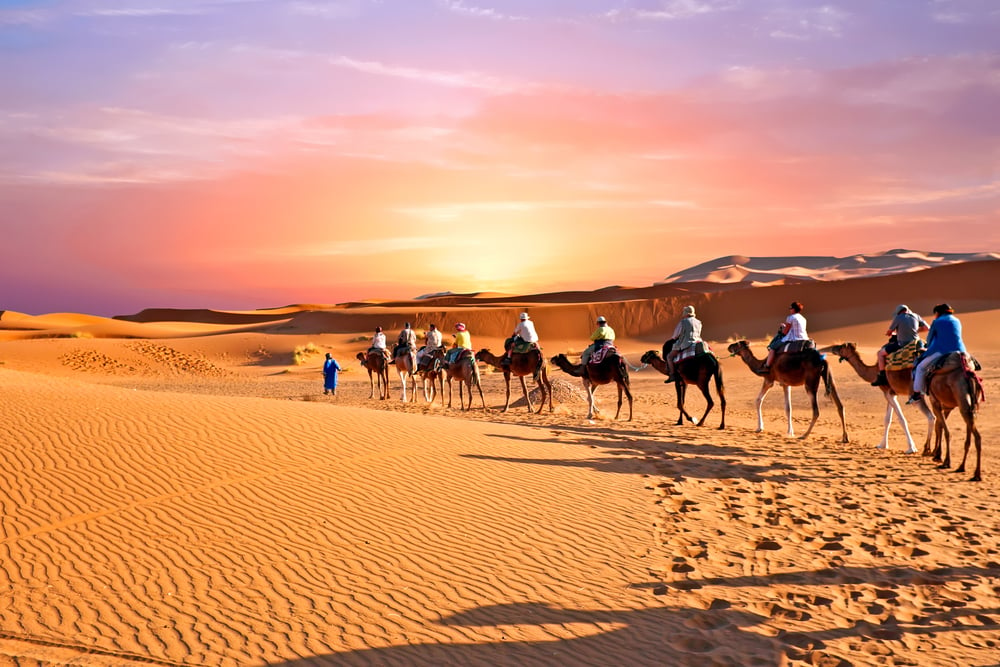
Recommended Video for you:
Cactus is not the only plant species that can survive in the desert. Other examples are mesquite trees, sage bush, short grasses and creosote bushes. One interesting aspect of desert plants is their lifespan, as many desert plants live annually or last for only a season.
Their seeds can remain dormant for long periods of time, however, if there is a severe dry spell, which is very common in deserts. Once it rains, even scarcely, the seeds immediately sprout and begin growing. In the very short time span of a year, the plants manage to grow , bloom, produce seeds and wither away. This characteristic of growing so rapidly can quickly change deserts into a ‘wonderland of flowers’ almost overnight if it receives a good amount of rain!
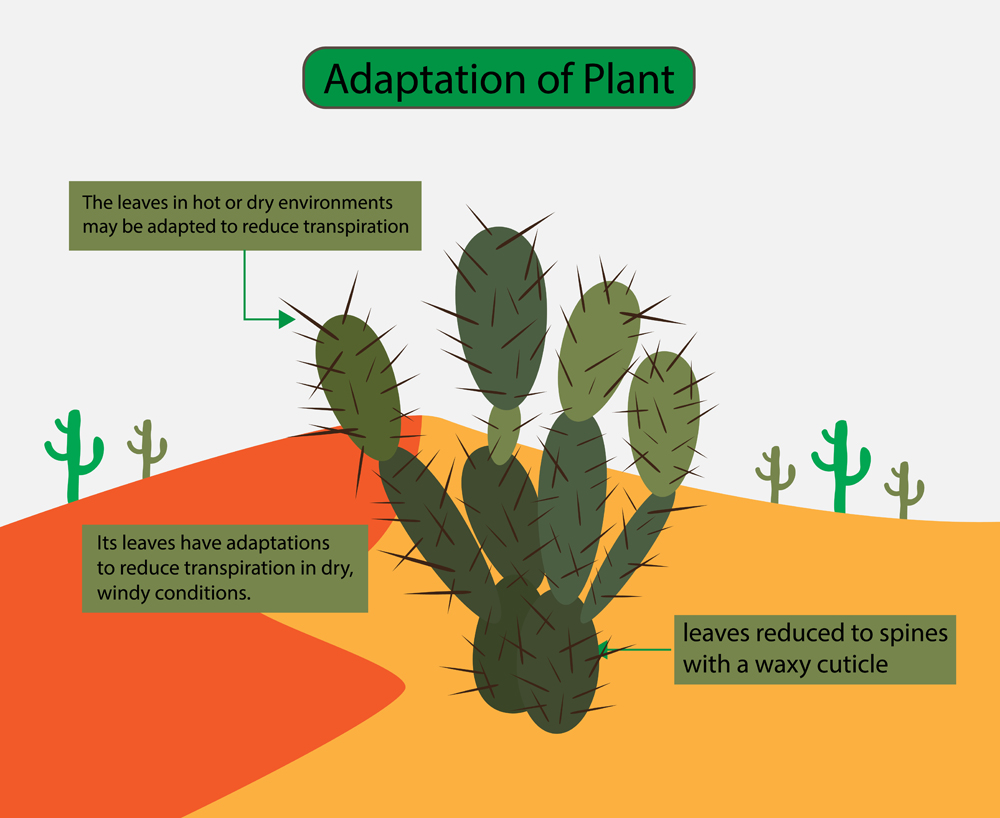
We know that plants take in water through their roots. Desert plants have highly adapted taproots that grow deep (20-30 feet) into the ground to absorb water (underground water reserve). When it rains in the desert, since the soil is porous, most of the rainwater percolates down without giving the soil much chance to hold water. These long taproots reach the underground water reserve and absorb water from there. The roots of the mesquite tree can reach more than 100 feet underground!
That is an impressive depth, yes, but the roots also grow in terms of breadth. Their goal is to absorb as much water as possible, so desert plants have a horizontal root system too! This means that the roots are there, just below the surface, but they spread far beyond the canopy of the plant so they can absorb any water that falls in its general vicinity.
As we know, photosynthesis occurs in the leaves, and the openings of the leaves called stomata provide an exchange of gases; however, this also leads to a loss of water in the form of water vapor. Therefore, desert plants have tiny and waxy leaves. The wax prevents water from escaping, and the glossy sheen reflects sunlight. Cacti have spiky thorns instead of leaves and store food in their stems.
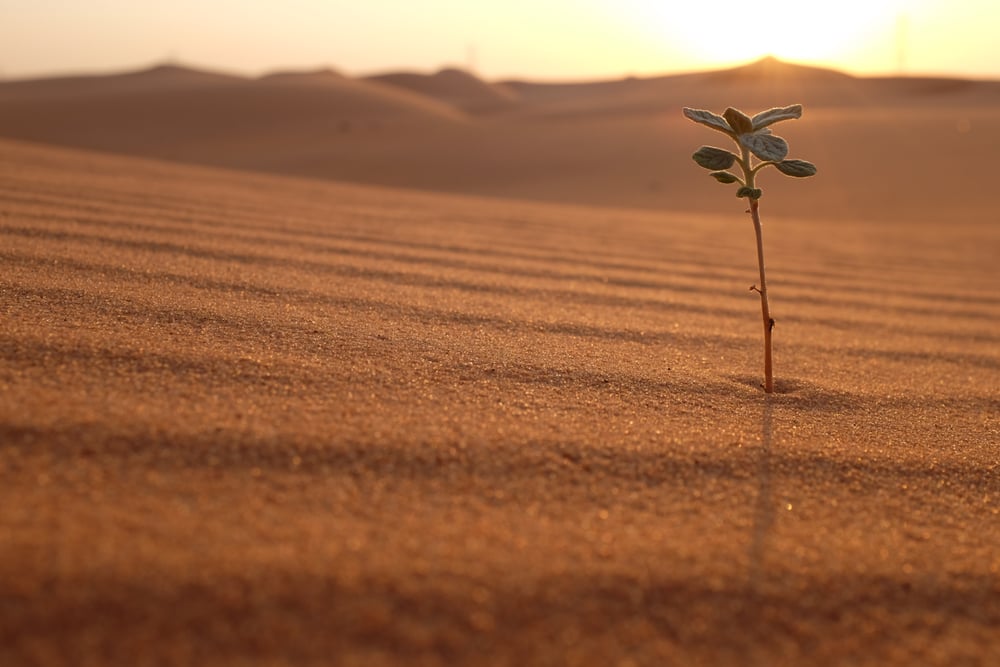
Just like a camel, plants have the ability to store water, and such plants are known as succulents. They store water in their leaves, stems, roots or fruit. Saguaro, a famous type of cactus, can store hundreds of liters of water to survive through dry times!
Also Read: Do We Need Deserts On The Planet?
Apart from camels, you will also find foxes, snakes, lizard, tortoises, rabbits, rats and red kangaroos in the desert. The insects, birds, reptiles and mammals that live in the desert are called xerocoles .
Xerocoles are usually nocturnal in nature, which means that they are active and hunt at night. They usually try to avoid the sun by staying under the limited shade of the desert.
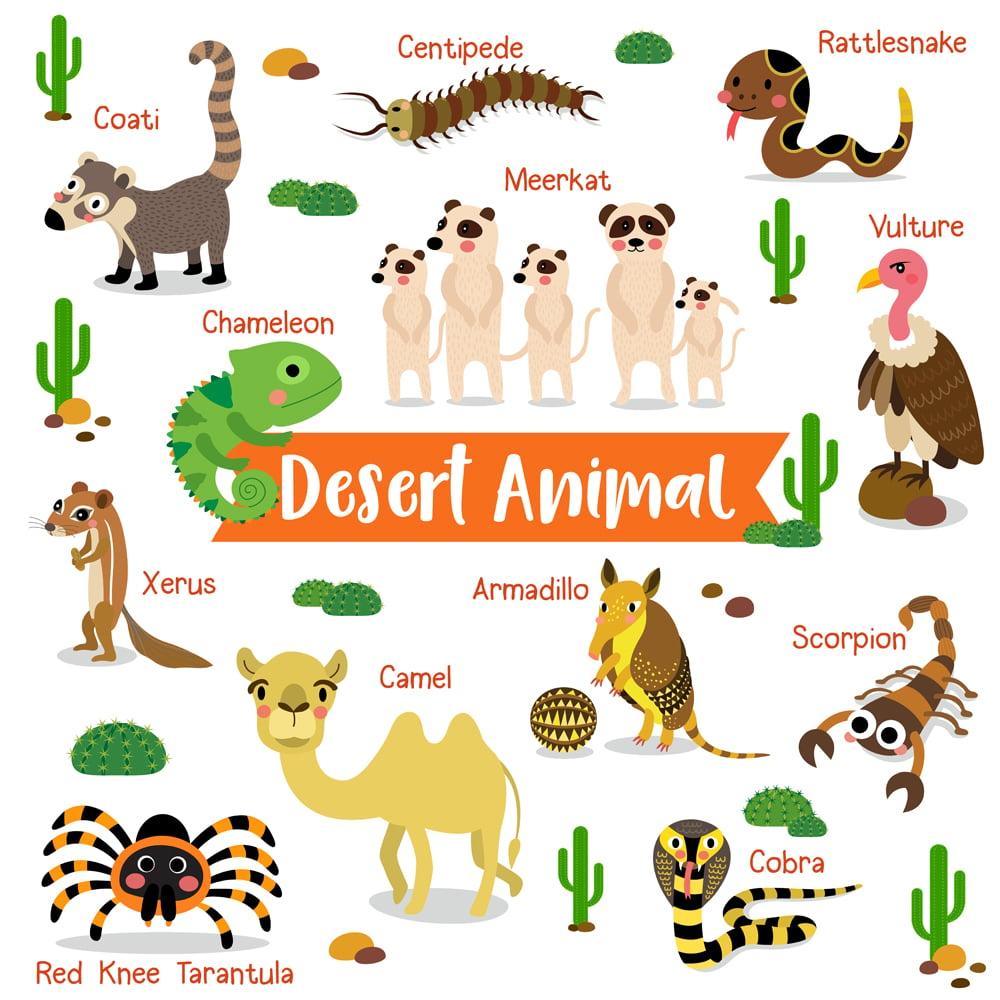
Some animals also dig burrows and stay underground, as it’s relatively cooler there. For example, the fennec fox of the Saharan Desert lives in communities and digs a large burrow for shelter. Even moving a foot or two underground drastically drops the temperature of the soil. Some animals have adapted to survive without water, so the water they take in from their food, including insects, bulbs and seeds, are more than enough to keep them going.
There are various bodily adaptations for the desert; for example, tortoises have a thick shell that prevents water loss and acts as a shield from predators. Vultures urinate on their own legs to cool them off, jackrabbits release heat from their long ears, and sand lizards quickly lift one leg at a time and walk on the sand to avoid the extreme heat, earning them the name ‘dancing lizards’ due to their jerky movements.

Now, coming to the “ships of the desert”—camels. Camels don’t store water in their hump, contrary to popular belief… they actually store fat . During a food shortage, the camel uses the stored fat to turn it into energy and water. Camels have wide feet so they don’t sink in the ground. They also have eyelashes, the hair on their body, and tightly closing nostrils to keep the sand away.
Also Read: How Do Nocturnal Animals Hunt Their Prey?
Civilizations in the Middle East and the Maghreb have adapted to life in deserts and have survived for centuries there. Changes in terms of clothing, shelter, food-seeking and the nature of the tribe have evolved over time.
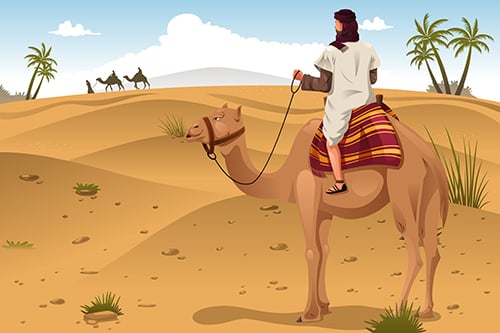
Clothing for desert-dwellers is usually white to reflect sunlight and the person is covered fully, only exposing their face and hands. This is done to protect the individuals from heat, sand, wind and bitterly cold nights .
The preferred desert clothing is loose and versatile. A long, full-sleeved robe is called thobe , a sleeveless cloak is called abaya , a pullover shirt is djebb a and a rectangular piece of cloth used to cover the head is called kaffiyeh .
It is already difficult to find natural shelter in the deserts. Manmade shelters include cliff-dwellings constructed with thick walls and small windows to allow limited sunlight to enter, while also keeping away sand and dust. Since the day and night temperatures in the desert vary greatly, this type of shelter provides good insulation and limits the change in temperature between day and night inside the walls.
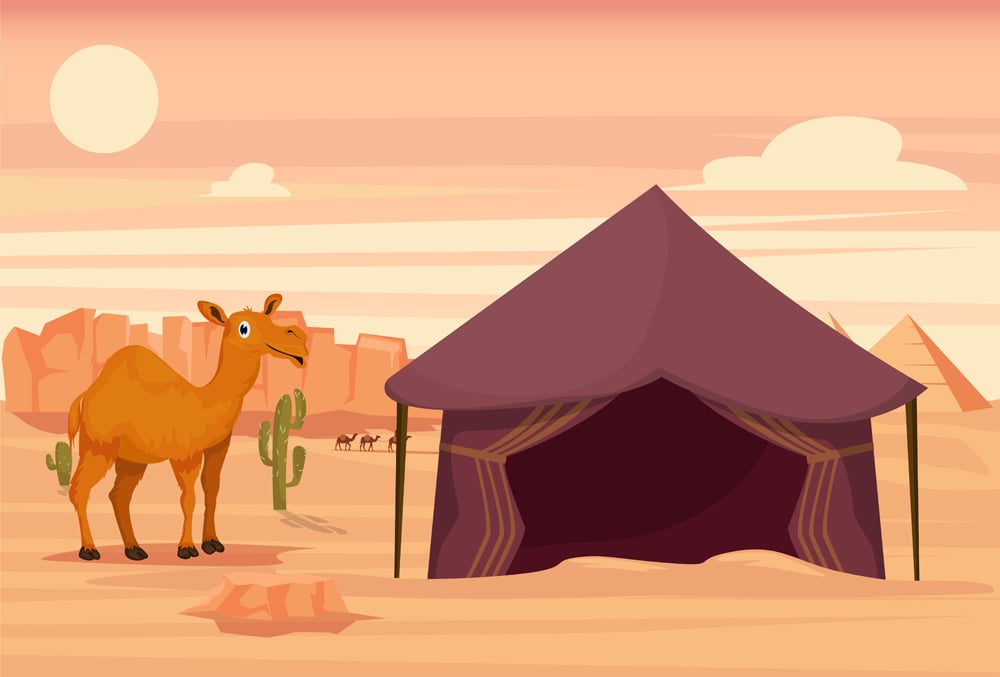
Nomadic – Nature
The scarcity of food and water in the desert led many civilizations to live as nomads. This means they have no permanent settlements. They make tents from thick cloth to keep dust and sand out, but this still allows a cool breeze to pass through the cloth. The tents are portable and can be carried on pack animals, such as camels, donkeys and horses. These nomads graze animals like sheep and goats.
So, do you still feel like deserts are lifeless? I’m sure your opinion has changed since the top of this article… Although life in deserts is undeniably tough, it has led to magnificent adaptations by both plants and animals, which shows us that once again, life will always find a way!
Also Read: Why Do Deserts Get Cold At Night?
- Desert Plants and Adaptations - Earth Floor: Biomes. cotf.edu
- Deserts guide for KS3 geography students - BBC Bitesize. BBC Online
- Desert - National Geographic Education. National Geographic
Anupriya is an English and Social Studies teacher at Jamnabai Narsee School, Mumbai. Besides her interest in Literature and Social Sciences, she spends her time reading finance articles and binge watching historical drama series on Netflix. She aspires to be an author.
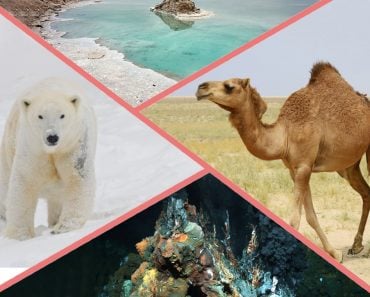
How Does Life Survive In Extreme Conditions?
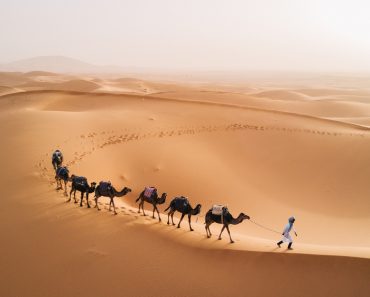
Why Are Deserts Hot And How Are They Formed?
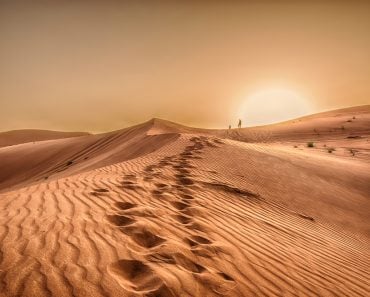
A Desert Is Covered With Sand, But What Is Beneath It?
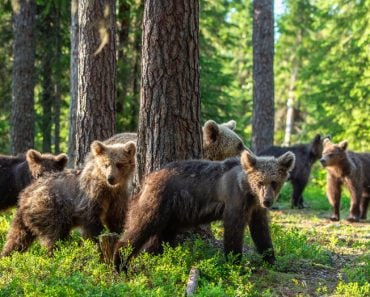
What Are Habitats And Niches?
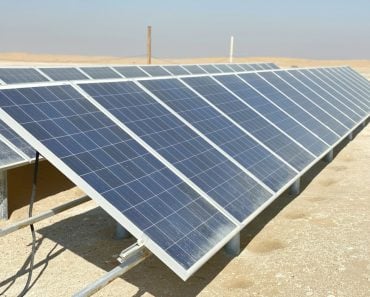
Can We Cover The Sahara Desert With Solar Panels?
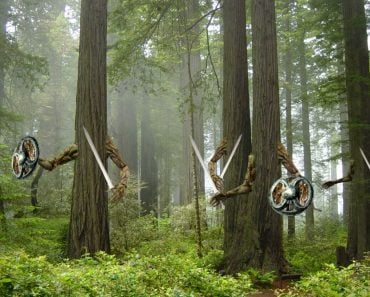
How Do Plants Defend Themselves?

What Lies Beneath the Desert Sands?

Can You LIVE In ANTARCTICA All Year Round?

Photosynthesis: The Biochemistry Behind How Plants Make Their Food

Do Fish Get Thirsty and Do They Need to Drink Water?
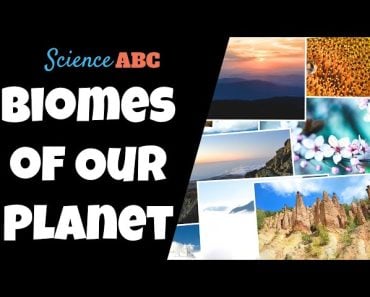
Biomes of the World: Oceans, Mountains, Forests, Grasslands, Deserts and More!

How Can Animals Drink Water From Dirty Ponds And Not Get Sick?

Paragraph on Desert in 100, 150, 200, 250 & 300 Words for Students
- Post author: Grammar Library
- Post category: Paragraph
Deserts may seem like endless stretches of sand at first glance, but there’s so much more to them than meets the eye. These vast landscapes face tough challenges, such as extreme heat and very little rain. Yet, they are home to a fascinating array of life and have unique features that make them important parts of our planet. Let’s embark on a journey to understand these remarkable ecosystems. By exploring deserts, we learn not only about the struggles they endure but also about the resilience and beauty hidden within them. This transition into our main discussion will reveal how deserts are vital to the environment and why they deserve our attention and respect.

Table of Contents
Paragraph on Desert in 100 words
Deserts are vast, dry areas where rain is a rare event, making life challenging. Despite the harsh conditions, deserts are home to various plants and animals adapted to survive with minimal water. Cacti, for instance, store water in their thick stems, while camels can go for days without water.
Deserts are not just sandy; some are rocky or icy. People have also adapted to living in deserts, developing methods to collect and conserve water. Deserts cover about one-fifth of the Earth’s surface, showing nature’s incredible ability to thrive under tough conditions.
Paragraph on Desert in 150 words
Deserts are fascinating ecosystems characterized by their extremely low precipitation, making them one of the harshest environments on Earth. They are not only expanses of sand but also include rocky and icy landscapes. Despite the scarcity of water, a remarkable variety of life has adapted to these conditions. Plants like cacti can store water in their tissues, while animals such as camels have special adaptations to minimize water loss.
Deserts are important for their unique biodiversity and play a significant role in the Earth’s climate by reflecting sunlight back into the atmosphere. People living in desert regions have ingeniously adapted to the environment by building homes that stay cool in the day and warm at night and by finding innovative ways to harvest water. Deserts remind us of nature’s resilience and the ingenious ways life adapts to survive.
Paragraph on Desert in 200 words
Deserts are one of the most intriguing biomes on Earth, characterized by their extreme dryness and sparse rainfall. These landscapes vary from the stereotypical sandy expanses to stone plateaus and even cold deserts covered in snow. Despite the arid conditions, deserts are bustling with life. Plants such as the cactus have thick, fleshy parts for storing water, while their spiky exterior protects them from herbivores. Animals, including the kangaroo rat in North America, have adapted to conserve water, producing very little or no urine.
Remarkably, deserts are not lifeless wastelands but ecosystems teeming with species that have ingeniously adapted to the environment’s challenges. Humans have also made their mark, developing unique architectural and agricultural techniques to cope with the lack of water. Ancient civilizations have thrived in desert regions, proving that with innovation and adaptation, life can flourish even in the most daunting conditions. Deserts also play a crucial role in the Earth’s ecosystem, influencing weather patterns and hosting a diverse range of life forms that showcase the resilience and adaptability of nature.

Paragraph on Desert in 250 words
Deserts are vast, barren areas of landscape where little rainfall occurs, making life challenging for plants and animals. These regions are not just about sand; they encompass a variety of environments, including cold deserts in high altitudes. Deserts cover about one-fifth of the Earth’s surface and are found on every continent. A fascinating aspect of deserts is their unique ecosystems, which have adapted to the harsh conditions. For instance, cacti in hot deserts store water in their thick stems to survive the dry periods, while animals like the camel can go for days without water.
In India, the Thar Desert, also known as the Great Indian Desert, is an important geographical feature. It stretches across several states and plays a crucial role in the culture and economy of the region. Despite the tough living conditions, people have inhabited desert areas for centuries, developing sustainable ways to cope with water scarcity. Traditional methods of water conservation, like rainwater harvesting and building stepwells, are remarkable examples of human ingenuity.
Deserts are not lifeless wastes but are vibrant ecosystems teeming with life and beauty. They are home to a diverse range of plants and animals that have interesting adaptations to survive in extreme conditions. Moreover, deserts offer stunning landscapes, from vast sand dunes to spectacular sunsets, making them fascinating subjects for photographers and nature lovers alike.
Paragraph on Desert in 300 words
Deserts are defined by their extreme environment, where very little rain falls, making them one of the most challenging places for life to flourish. Despite these harsh conditions, deserts are found across the globe, each with its unique ecosystem and biodiversity. These regions can be hot, with scorching daytime temperatures that plunge at night, or cold, where frost and snow are more common than rain. The adaptability of life in deserts is truly remarkable, with plants and animals evolving extraordinary strategies to survive.
In India, the Thar Desert stands as a prominent example, stretching over four states and forming a natural boundary between India and Pakistan. This desert is not just a stretch of barren land; it’s a lively place where communities have thrived for millennia. Agriculture in the Thar Desert relies heavily on innovative farming techniques and the efficient use of water through systems like ‘Khadins’ and ‘Johads’ to capture and conserve rainwater.
Deserts also play a vital role in the Earth’s climate system. They act as heat sinks, absorbing a large amount of the sun’s energy. The unique geological formations found in deserts, such as rock arches, canyons, and mesas, are subjects of study for scientists and geologists, providing insights into Earth’s history and climatic changes over millions of years.
Culturally, deserts have been the backdrop for numerous traditions, stories, and lifestyles that have enriched human civilization. The festivals, music, and art from desert regions are a testament to the human spirit’s resilience and creativity. Additionally, deserts are important for their mineral resources, including oil and precious metals, which are vital to modern economies.
Understanding and preserving deserts is crucial, not only for their ecological and economic significance but also for the cultural heritage they represent. Protecting these unique landscapes ensures that future generations can learn from and enjoy the natural beauty and diversity of deserts around the world.
You Might Also Like
Paragraph on lockdown in 100, 150, 200, 250 & 300 words, paragraph on solar system in 100, 150, 200, 250 & 300 words, paragraph on time management in 100, 150, 200, 250 & 300 words, leave a reply cancel reply.
Save my name, email, and website in this browser for the next time I comment.

Ever wondered about the natural world in this desert environment we live in? Ecologist Dr Aspa shares with us her intimate knowledge of, and the surprising beauty found in, this unique ecosystem and how important it is to protect it.
Many people view the desert as a barren place, tell us about life here
It is true that the Qatari desert looks dusty, empty and quiet.
But actually, she hosts 2,000 species of organisms, not counting microbes, half on land and the rest in her coasts and seas. Their activity is imperceivable, because most animals lead a cryptic existence, camouflaged to blend in with the desert colors, or hiding in their burrows in daytime.
Much of my understanding of her inhabitants comes from spending endless hours roaming the desert, imprinting the surroundings and seasonal changes. Reading signs of activity, and tracking footprints, the ancient art of indigenous people, I have “seen” the fox chasing a desert hare, the dhub living peacefully next to a jird’s burrow, Arabian horned vipers side winding down sandy patches, and camels sand bathing.
The rains and cooler temperatures of the winter and spring, bring the growth of annuals, painting the desert green and signaling reproduction cues for animals. Chances of live sightings during this time increase, and explorers who sit still and quiet, are rewarded by the European Hoopoe, the blue-headed agama, the Egyptian hedgehog and many others.

How do these organisms cope with extreme heat?
Life in the desert is all about maintaining a balance of thermal energy and water. For example, to avoid over-heating the fox releases heat from her long ears, and stays mostly in her burrow during daytime to avoid the scorching rays of the sun.
Many animals exhibit this behavior of avoidance to the extremes. Water conservation is a physiological adaptation. Animals obtain most of their water from prey or plants, and are more efficient at retaining it in their bodies than we are. This is why the dhub’s poop and urine are solid and dry.
When it comes to plants, perennials have an amazing capacity at extracting scarce nutrients from the soil, and annuals are very fast in their response to rain, going from seed to vegetative state to seed dispersal, a full life cycle, in just a matter of a few months.
What is your personal favourite desert inhabitant?
All the desert inhabitants are my favorite because as an ecologist I have an innate sense of how important each one is to the healthy functioning of nature.
If I had to choose, I would deem cyanobacteria my top favourite, because they are what brought me to the desert, and although tiny, they revolutionised biological life as we know it by oxygenating the atmosphere about 3.5 billion years ago. As we speak, they are working on providing many ecosystem services to keep our world turning like keeping our soil fertile, and removing greenhouse gases from the atmosphere to fight climate change.

How critical is it to know and understand this environment?
It is critical to understand the local environment, wherever we reside. This is the way we come to have vested interest in the local nature, becoming more eager to protect and be her respectful stewards.
You can think of this “local knowledge” as a sister movement to “buy local produce” and “support local businesses”. I am very happy and proud to work with many organizations, including Qatar Natural History Group, on building up and sharing this knowledge base on local wildlife and ecology.
Finally, our desert environment is even more critical to understand, because it is very fragile and sensitive to disturbance. This is why we always give best practice guidelines for exploration which include: always drive on desert highways, never step on plants and never destroy burrows; keep your distance and marvel animals from afar because they distress in our presence.
Our moto is “pick up your trash, keep nature clean”.
Dr Aspa D. Chatziefthimiou is Talks Coordinator for the Qatar Natural History Group . This article first appeared in the March 2021 QNHG Newsletter. Follow QNHG @qnhg_official

Click here to cancel reply.
Submit Comment
- NEWS & EVENTS
GET IN TOUCH [email protected]

ENCYCLOPEDIC ENTRY
Deserts are areas that receive very little precipitation.
Biology, Ecology, Earth Science, Geology, Meteorology, Geography, Human Geography, Physical Geography, Social Studies, World History
Loading ...
Deserts are areas that receive very little precipitation . People often use the adjectives “hot,” “dry,” and “empty” to describe deserts , but these words do not tell the whole story. Although some deserts are very hot, with daytime temperatures as high as 54°C (130°F), other deserts have cold winters or are cold year-round. And most deserts , far from being empty and lifeless, are home to a variety of plants, animals, and other organisms . People have adapted to life in the desert for thou sands of years. One thing all deserts have in common is that they are arid , or dry. Most experts agree that a desert is an area of land that receives no more than 25 centimeters (10 inches) of precipitation a year. The amount of evaporation in a desert often greatly exceeds the annual rainfall. In all deserts , there is little water available for plants and other organisms . Deserts are found on every continent and cover about one-fifth of Earth’s land area. They are home to around 1 billion people—one-sixth of the Earth’s population. Although the word “ desert ” may bring to mind a sea of shifting sand , dunes cover only about 10 percent of the world’s deserts . Some deserts are mountainous. Others are dry expanses of rock, sand , or salt flats . Kinds of Deserts The world’s deserts can be divided into five types—subtropical, coastal, rain shadow , interior, and polar. Deserts are divided into these types according to the causes of their dryness. Subtropical Deserts Subtropical deserts are caused by the circulation patterns of air masses . They are found along the Tropic of Cancer , between 15 and 30 degrees north of the Equator , or along the Tropic of Capricorn , between 15 and 30 degrees south of the Equator . Hot, moist air rises into the atmosphere near the Equator . As the air rises, it cools and drops its moisture as heavy tropical rains. The resulting cooler, drier air mass moves away from the Equator . As it approaches the tropics, the air descends and warms up again. The descending air hinders the formation of clouds , so very little rain falls on the land below. The world’s largest hot desert , the Sahara, is a subtropical desert in northern Africa. The Sahara Desert is almost the size of the entire continental United States. Other subtropical deserts include the Kalahari Desert in southern Africa and the Tanami Desert in northern Australia. Coastal Deserts Cold ocean currents contribute to the formation of coastal deserts . Air blowing toward shore , chilled by contact with cold water, produces a layer of fog . This heavy fog drifts onto land. Although humidity is high, the atmospheric changes that normally cause rainfall are not present. A coastal desert may be almost totally rainless, yet damp with fog . The Atacama Desert , on the Pacific shores of Chile, is a coastal desert . Some areas of the Atacama are often covered by fog . But the region can go decades without rainfall. In fact, the Atacama Desert is the driest place on Earth. Some weather stations in the Atacama have never recorded a drop of rain. Rain Shadow Deserts Rain shadow deserts exist near the leeward slopes of some mountain ranges . Leeward slopes face away from prevailing winds . When moisture-laden air hits a mountain range , it is forced to rise. The air then cools and forms clouds that drop moisture on the windward ( wind -facing) slopes. When the air moves over the mountaintop and begins to descend the leeward slopes, there is little moisture left. The descending air warms up, making it difficult for clouds to form. Death Valley , in the U.S. states of California and Nevada, is a rain shadow desert . Death Valley , the lowest and driest place in North America, is in the rain shadow of the Sierra Nevada mountains.
Interior Deserts Interior deserts , which are found in the heart of continents , exist because no moisture-laden winds reach them. By the time air masses from coastal areas reach the interior, they have lost all their moisture. Interior deserts are sometimes called inland deserts . The Gobi Desert , in China and Mongolia, lies hundreds of kilometers from the ocean. Winds that reach the Gobi have long since lost their moisture. The Gobi is also in the rain shadow of the Himalaya mountains to the south. Polar Deserts Parts of the Arctic and the Antarctic are classified as deserts . These polar deserts contain great quantities of water, but most of it is locked in glaciers and ice sheets year-round. So, despite the presence of millions of liters of water, there is actually little available for plants and animals. The largest desert in the world is also the coldest. Almost the entire continent of Ant arctica is a polar desert , experiencing little precipitation . Few organisms can withstand the freezing, dry climate of Ant arctica . Changing Deserts The regions that are deserts today were not always so dry. Between 8000 and 3000 BCE, for example, the Sahara had a much milder, moister climate . Climatologists identify this period as the “ Green Sahara .” Archaeological evidence of past settlements is abundant in the middle of what are arid , unproductive areas of the Sahara today. This evidence includes rock paintings, graves , and tools. Fossils and artifacts show that lime and olive trees, oaks, and oleanders once bloomed in the Sahara. Elephants, gazelles, rhinos, giraffes, and people used stream-fed pools and lakes. There were three or four other moist periods in the Sahara. Similar lush conditions existed as recently as 25,000 years ago. Between the moist periods came periods of dryness much like today’s. The Sahara is not the only desert to have dramatic climate change . The Ghaggar River , in what is now India and Pakistan, was a major water source for Mohenjo-daro , an urban area of the ancient Indus Valley Civilization . Over time, the Ghaggar changed course and now only flows during the rainy monsoon season. Mohenjo-daro is now a part of the vast Thar and Cholistan deserts . Most of Earth’s deserts will continue to undergo periods of climate change . Desert Characteristics Humidity —water vapor in the air—is near zero in most deserts . Light rains often e vaporate in the dry air, never reaching the ground. Rainstorms sometimes come as violent cloudbursts . A cloudburst may bring as much as 25 centimeters (10 inches) of rain in a single hour—the only rain the desert gets all year. Desert humidity is usually so low that not enough water vapor exists to form clouds . The sun’s rays beat down through cloudless skies and bake the land. The ground heats the air so much that air rises in waves you can actually see. These shimmering waves confuse the eye, causing travelers to see distorted images called mirages . Temperature extremes are a characteristic of most deserts . In some deserts , temperatures rise so high that people are at risk of dehydration and even death. At night, these areas cool quickly because they lack the insulation provided by humidity and clouds . Temperatures can drop to 4°C (40°F) or lower. In the Chihuahuan Desert , in the United States and Mexico, temperatures can vary by dozens of degrees in one day. Daytime temperatures in the Chihuahua can climb beyond 37°C (100°F), while nighttime temperatures can dip below freezing (0°C or 32°F).
Winds at speeds of about 100 kilometers per hour (60 miles per hour) sweep through some deserts . With little vegetation to block it, the wind can carry sand and dust across entire continents and even oceans. Windstorms in the Sahara hurl so much material into the air that African dust sometimes crosses the Atlantic Ocean. Sunsets on the Atlantic coast of the U.S. state of Florida, for example, can be tinted yellow. First-time visitors to deserts are often amazed by the unusual landscapes , which may include dunes , towering bare peaks, flat-topped rock formations, and smoothly polished canyons . These features differ from those of wetter regions, which are often gently rounded by regular rainfall and softened by lush vegetation . Water helps carve desert lands. During a sudden storm, water scours the dry, hard-baked land, gathering sand , rocks, and other loose material as it flows. As the muddy water roars downhill, it cuts deep channels, called arroyos or wadis . A thunderstorm can send a fast-moving torrent of water—a flash flood —down a dry arroyo . A flash flood like this can sweep away anything and anyone in its path. Many desert regions di scourage visitors from hiking or camping in arroyos for this reason. Even urban areas in deserts can be vulnerable to flash floods . The city of Jeddah, Saudi Arabia, sits in the Arabian Desert . In 2011, Jeddah was struck by a sudden thunderstorm and flash flood . Roads and buildings were washed away, and more than 100 people died. Even in a desert , water and wind eventually wear away softer rock. Sometimes, rock is carved into tablelike formations such as mesas and buttes . At the foot of these formations, water drops its burden of gravel , sand , and other sediment, forming deposits called alluvial fans . Many deserts have no drainage to a river , lake, or ocean. Rainwater, including water from flash floods , collects in large depressions called basins . The shallow lakes that form in basins eventually e vaporate , leaving playas , or salt-surfaced lake beds. Playas , also called sinks, pans, or salt flats , can be hundreds of kilometers wide. The Black Rock Desert in the U.S. state of Nevada, for instance, is all that remains of the prehistoric Lake Lahontan. The hard, flat surface of desert salt flats are often ideal for car racing. In 1997, British pilot Andy Green set the land speed record in Black Rock Desert —1,228 kilometers per hour (763 miles per hour). Green’s vehicle, the ThrustSSC, was the first car to break the sound barrier . Wind is the primary sculptor of a desert ’s hills of sand , called dunes . Wind builds dunes that rise as high as 180 meters (590 feet). Dunes migrate constantly with the wind . They usually shift a few meters a year, but a particularly violent sandstorm can move a dune 20 meters (65 feet) in a single day. Sandstorms may bury everything in their path—rocks, fields, and even towns. One legend holds that the Persian Emperor Cambyses II sent an army of 50,000 men to the Siwa Oasis in western Egypt around 530 BCE. Halfway there, an enormous sandstorm swallowed the entire group. Archaeologists in the Sahara have been unsuccessfully looking for the “Lost Army of Cambyses” ever since. Water in the Desert Rain is usually the main source of water in a desert , but it falls very rarely. Many desert dwellers rely on groundwater , stored in aquifers below the surface. Groundwater comes from rain or other precipitation , like snow or hail. It seeps into the ground, where it can remain for thou sands of years. Underground water sometimes rises to the surface, forming springs or seeps. A fertile green area called an oasis , or cienega , may exist near such a water source. About 90 major, inhabited oases dot the Sahara. These oases are supported by some of the world’s largest supplies of underground water. People, animals, and plants all surround these oases, which provide stable access to water, food, and shelter. When groundwater doesn’t seep to the surface, people often drill into the ground to get to it. Many desert cities, from the American Southwest to the Middle East , rely heavily on such aquifers to fill their water needs. Rural Israeli communities called kibbutzim rely on aquifers to furnish water for crops and even fish farming in the dry Negev Desert .
Drilling into aquifers provides water for drinking, agriculture , industry , and hygiene . However, it comes at a cost to the environment. Aquifers take a long time to refill. If desert communities use groundwater faster than it is replenished, water shortages can occur. The Mojave Desert , in southern California and Nevada, for instance, is sinking due to aquifer depletion . The booming desert communities of Las Vegas, Nevada, and California’s “ Inland Empire ” are using water faster than the aquifer is being refilled. The water level in the aquifer has sunk as much as 30 meters (100 feet) since the 1950s, while the land above the aquifer has sunk as much as 10 centimeters (4 inches). Rivers sometimes provide water in a desert . The Colorado River , for instance, flows through three deserts in the American Southwest: the Great Basin , the Sonoran, and the Mojave. Seven states—Wyoming, Colorado, Utah, New Mexico, Nevada, Arizona, and California—rely on the river for some of their water supply. People often modify rivers to help distribute and store water in a desert . The Nile River ecosystem dominates the eastern part of the Sahara Desert , for instance. The Nile provides the most reliable, plentiful source of freshwater in the region. Between 1958 and 1971, the government of Egypt constructed a massive dam on the Upper Nile (the southern part of the river , near Egypt’s border with Sudan). The Aswan Dam harnesses the power of the Nile for hydroelectricity used in in dustry . It also stores water in a manmade lake, Lake Nasser, to protect the country’s communities and agriculture against drought . Construction of the Aswan High Dam was a huge engineering project. Local desert communities can divert rivers on a smaller scale. Throughout the Middle East , communities have dug artificial wadis , where freshwater can flow during rainy seasons. In countries like Yemen, artificial wadis can carry enough water for whitewater rafting trips during certain times of the year. When deserts and water supplies cross state and national borders, people often fight over water rights . This has happened among the states in the Colorado River Basin , which have negotiated for many years over the division of the river ’s water. Rapidly expanding populations in California, Nevada, and Arizona have compounded the problem. Agreements that were made in the early 20th century failed to account for Native American water rights . Mexican access to the Colorado, which has its delta in the Mexican state of Baja California, was ignored. Desert agriculture , including cotton production, demanded a large portion of the Colorado. The environmental impact of dams was not considered when the structures were built. States of the Colorado River Basin continue to negotiate today to prepare for population growth, agricultural development , and the possibility of future droughts . Life in the Desert Plants and animals adapt to desert habitats in many ways. Desert plants grow far apart, allowing them to obtain as much water around them as possible. This spacing gives some desert regions a desolate appearance. In some deserts , plants have unique leaves to capture sunlight for photosynthesis , the process plants use to make food. Small pores in the leaves, called stomata , take in carbon dioxide . When they open, they also release water vapor . In the desert , all these stomata would quickly dry out a plant. So desert plants typically have tiny, waxy leaves. Cactuses have no leaves at all. They produce food in their green stems. Some desert plants, such as cactuses , have shallow, wide-spreading root systems . The plants soak up water quickly and store it in their cells . Saguaro cactuses , which live in the Sonoran Desert of Arizona and northern Mexico, expand like accordions to store water in the cells of their trunks and branches. A large saguaro is a living storage tower that can hold hundreds of liters of water. Other desert plants have very deep roots. The roots of a mesquite tree, for example, can reach water more than 30 meters (100 feet) underground. Mesquites , saguaros, and many other desert plants also have thorns to protect them from grazing animals . Many desert plants are annuals , which means they only live for one season. Their seeds may lie dormant for years during long dry spells. When rain finally comes, the seeds sprout rapidly. Plants grow, bloom, produce new seeds, and die, often in a short span of time. A soaking rain can change a desert into a wonderland of flowers almost overnight.
Animals that have adapted to a desert environment are called xerocoles . Xerocoles include species of insects, reptiles, birds, and mammals. Some xerocoles avoid the sun by resting in scarce shade. Many escape the heat in cool burrows they dig in the ground. The fennec fox, for example, is native to the Sahara Desert . Fennec fox communities work together to dig large burrows , some as large as 93 square meters (1,000 square feet). Dew can collect in these burrows , providing the foxes with fresh water. However, fennec foxes have adapted so they do not have to drink water at all: Their kidneys retain enough water from the food they eat. Most xerocoles are nocturnal . They sleep through the hot days and do their hunting and foraging at night. Deserts that seem desolate during the day are very active in the cool nighttime air. Foxes, coyotes, rats, and rabbits are all nocturnal desert mammals. Snakes and lizards are familiar desert reptiles. Insects such as moths and flies are abundant in the desert . Most desert birds are restricted to areas near water, such as river banks. However, some birds, such as the roadrunner, have adapted to life in the desert . The roadrunner, native to the deserts of North America, obtains water from its food. Some xerocoles have bodies that help them handle the heat. A desert tortoise’s thick shell insulates the animal and reduces water loss. Sand lizards, native to the deserts of Europe and Asia, are nicknamed “dancing lizards” because of the way they quickly lift one leg at a time off the hot desert sand . A jackrabbit’s long ears contain blood vessels that release heat. Some desert vultures urinate on their own legs, cooling them by e vaporation . Many desert animals have developed ingenious ways of getting the water they need. The thorny devil, a lizard that lives in the Australian Outback , has a system of tiny grooves and channels on its body that lead to its mouth. The lizard catches rain and dew in these grooves and sucks them into its mouth by gulping. Camels are very efficient water users. The animals do not store water in their humps, as people once believed. The humps store fat. Hydrogen molecules in the fat combine with inhaled oxygen to form water. During a shortage of food or water, camels draw upon this fat for nutrition and moisture. Dromedary camels, native to the Arabian and Sahara deserts , can lose up to 30 percent of their body weight without harm. Camels, nicknamed “ships of the desert ,” are widely used for transportation, meat, and milk in the Maghreb (a region in Northwest Africa), the Middle East , and the Indian Sub continent . People and the Desert About 1 billion people live in deserts . Many of these people rely on centuries-old customs to make their lives as comfortable as possible Civilizations throughout the Middle East and Maghreb have adapted their clothing to the hot, dry conditions of the Sahara and Arabian deserts . Clothing is versatile and based on robes made of rectangles of fabric. Long-sleeved, full-length, and often white, these robes shield all but the head and hands from the wind , sand , heat, and cold. White reflects sunlight, and the loose fit allows cooling air to flow across the skin. These robes of loose cloth can be adjusted (folded) for length, sleeves, and pockets, depending on the wearer and the climate . A thobe is a full-length, long-sleeved white robe. An abaya is a sleeveless cloak that protects the wearer from dust and heat. A djebba is a short, square pullover shirt worn by men. A kaffiyeh is a rectangular piece of cloth folded loosely around the head to protect the wearer from sun exposure, dust , and sand . It can be folded and unfolded to cover the mouth, nose, and eyes. Kaffiyehs are secured around the head with a cord called an agal . A turban is similar to a kaffiyeh , but wrapped around the head instead of being secured with an agal . Turbans are also much longer—up to six meters (20 feet)! Desert dwellers have also adapted their shelters for the unique climate . The ancient Anasazi peoples of the southwestern United States and northern Mexico constructed huge apartment complexes in the rocky cliffs of the Sonoran Desert . These cliff dwellings, sometimes dozens of meters off the ground, were constructed with thick, earthen walls that provided insulation . Although temperatures outside varied greatly from day to night, temperatures inside did not. Tiny, high windows let in only a little light and helped keep out dust and sand .
The need to find food and water has led many desert civilizations to become nomadic . Nomadic cultures are those that do not have permanent settlements. In the deserts of the Middle East and Asia, nomadic tent communities continue to flourish . Tent walls are made of thick, sturdy cloth that can keep out sand and dust , but also allow cool breezes to blow through. Tents can be rolled up and transported on pack animals (usually horses, donkeys, or camels). Nomads move frequently so their flocks of sheep and goats will have water and grazing land. Besides animals like camels and goats, a variety of desert vegetation is found in oases and along the shores of rivers and lakes. Figs, olives, and oranges thrive in desert oases and have been harvested for centuries. Some desert areas rely on resources brought from more fertile areas—food trucked in from distant farmlands or, more frequently, water piped from wetter regions. Large areas of desert soil are irrigated by water pumped from underground sources or brought by canal from distant rivers or lakes. The booming Inland Empire of southeastern California is made up of deserts (the Mojave and the Sonoran) that rely on water for agriculture , in dustry , and residential development. Canals and aqueducts supply the Inland Empire with water from the Colorado River , to the east, and the Sierra Nevada snowmelt to the north. A variety of crops can thrive in these irrigated oases. Sugar cane is a very water-intensive crop mostly harvested in tropical regions. However, sugar cane is also harvested in the deserts of Pakistan and Australia. Water for irrigation is transported from hundreds of kilometers away, or drilled from hundreds of meters underground. Oases in desert climates have been popular spots for tourists for centuries. Spas ring the Dead Sea, a saline lake in the Judean Desert of Israel and Jordan. The Dead Sea has had flourishing spas since the time of King David . Air transportation and the development of air conditioning have made the sunny climate of deserts even more accessible and attractive to people from colder regions. Populations at resorts like Palm Springs , California, and Las Vegas, Nevada, have boomed. Desert parks, such as Death Valley National Park, California, attract thou sands of visitors every year. People who migrate to the warm, dry desert for the winter and return to more temperate climates in the spring are sometimes called “ snowbirds .” In rural areas, hot days turn into cool nights, providing welcome relief from the scorching sun. But in cities, structures like buildings, roads, and parking lots hold on to daytime heat long after the sun sets. The temperature stays high even at night, making the city an “island” of heat in the middle of the desert . This is called the urban heat island effect. It is less pronounced in desert cities than cities built in heavily forested areas. Cities like New York City, New York, and Atlanta, Georgia, can be 5 degrees warmer than the surrounding area. New York was built on wetland habitat , and Atlanta was built in a wooded area. Cities like Phoenix, Arizona, or Kuwait City, Kuwait, have a much smaller urban heat island effect. They may be only slightly warmer than the surrounding desert . Deserts can hold economically valuable resources that drive civilizations and economies. The most notable desert resource in the world is the massive oil reserves in the Arabian Desert of the Middle East . More than half of the proven oil reserves in the world lie beneath the sands of the Arabian Desert , mostly in Saudi Arabia. The oil in dustry draws companies, migrant workers, engineers, geologists , and biologists to the Middle East . Desertification Desertification is the process of productive cropland turning into non-productive, desert -like environments. Desertification usually happens in semi- arid areas that border deserts . Human activities are a primary cause of desertification . These activities include overgrazing of livestock , deforestation , overcultivation of farmland, and poor irrigation practices. Overgrazing and de forestation remove plants that anchor the soil. As a result, wind and water erode the nutrient -rich topsoil . Hooves from grazing livestock compact the soil, preventing it from absorbing water and fertilizers . Agricultural production is devastated , and the economy of a region suffers.
The deserts of Patagonia , the largest in South America, are expanding due to desertification . Patagonia is a major agricultural region where non-native species such as cattle and sheep graze on grassland . Sheep and cattle have reduced the native vegetation in Patagonia , causing loss of valuable topsoil . More than 30 percent of the grasslands of Argentina, Chile, and Bolivia are faced with desertification . People often overuse natural resources to survive and profit in the short term, while neglecting long-term sustainability . Madagascar, for instance, is a tropical island in the Indian Ocean. Seeking greater economic opportunities, farmers in Madagascar engaged in slash-and-burn agriculture . This method relies on cutting and burning forests to create fields for crops . Unfortunately, at the time farmers were investing in slash-and-burn agriculture , Madagascar experienced long-term droughts . With little vegetation to anchor it, the thin topsoil quickly eroded . The island’s central plateau is now a barren desert . Rapid population growth also can lead to overuse of resources , killing plant life and depleting nutrients from the soil. Lake Chad is a source of freshwater for four countries on the edge of the Sahara Desert : Chad, Cameroon, Niger, and Nigeria. These developing countries use Lake Chad’s shallow waters for agriculture , in dustry , and hygiene . Since the 1960s, Lake Chad has shrunk to half its size. Desertification has severely reduced the wetland habitats surrounding the lake, as well as its fishery and grazing lands. Desertification is not new. In the 1930s, parts of the Great Plains of North America became the “ Dust Bowl ” through a combination of drought and poor farming practices. Millions of people had to leave their farms and seek a living in other parts of the country. Desertification is an increasing problem. Every year, about 6 million square kilometers (2.3 million square miles) of land become useless for cultivation due to desertification . The Sahara Desert crept 100 kilometers (39 miles) south between 1950 and 1975. South Africa is losing 300-400 million metric tons (330-441 short tons) of topsoil each year. Many countries are working to reduce the rates of desertification . Trees and other vegetation are being planted to break the force of the wind and to hold the soil. Windbreaks made of trees have been planted throughout the Sahel , the southern border region of the Sahara Desert . These windbreaks anchor the soil and prevent sand from invading populated areas. In China’s Tengger Desert , researchers have developed another way to control wandering dunes . They anchor the drifting sand with a gridlike network of straw fences. Straw is poked partway into the sand , forming a pattern of small squares along the contours of the dunes . The resulting fences break the force of the wind at ground level, stopping dune movement by confining the sand within the squares of the grid. New technologies are also being developed to combat desertification . “ Nanoclay ” is a substance sprayed on desert sands that acts as a binding agent. Nanoclay keeps the sand moist, clumping it together and preventing it from blowing away. Deserts Get Hotter Rising temperatures can have huge effects on fragile desert ecosystems . Global warming is the most current instance of climate change . Human activities such as burning fossil fuels contribute to global warming . In deserts , temperatures are rising even faster than the global average. This warming has effects beyond simply making hot deserts hotter. For example, increasing temperatures lead to the loss of nitrogen , an important nutrient , from the soil. Heat prevents microbes from converting nutrients to nitrates , which are necessary for almost all living things. This can reduce the already limited plant life in deserts . Climate change also affects rainfall patterns. Climate scientists predict that global warming will lead to more rainfall in some regions, but less rainfall in other places. Areas facing reduced precipitation include areas with some of the largest deserts in the world: North Africa (Sahara), the American Southwest (Sonoran and Chihuahuan), the southern Andes ( Patagonia ), and western Australia (Great Victoria). In literature and in legend, deserts are often described as hostile places to avoid. Today, people value desert resources and biodiversity . Communities, governments , and organizations are working to preserve desert habitats and increase desert productivity.
Devil of a Storm Dust devils are common in hot deserts. They look like tiny tornadoes, but they start on the ground rather than in the sky. When patches of ground get very hot, the heated air above them begins to rise and spin. This whirling column of hot air picks up dust and dirt. These spinning columns of dirt can rise hundreds of feet in the air.
Freak Floods Deserts are defined by their dryness. However, flash floods take more lives in deserts than thirst does.
Hot and Cold Deserts The largest hot desert in the world is the Sahara, which is 9 million square kilometers (3.5 million square miles). It isn't the hottest place on Earth, though. That distinction belongs to Death Valley, in California's Mojave Desert. The highest temperature on Earth was recorded there: 56.7 C (134.1 F). The largest polar desert is Antarctica, at 13 million square kilometers (5 million square miles). Antarctica boasts the lowest official temperature recorded on Earth: -89.2 C (-128.6 F), recorded on July 21, 1983.
Rising from the Ashes The desert city of Phoenix, Arizona, is named for the mythical desert bird that burns to death only to be reborn, rising from its own ashes. The city of Phoenix was built on top of the ruins of canals built by the Hohokam people between 500 and 1450 CE. The Hohokam used the canals to irrigate their crops. Modern-day residents also rely on an extensive canal system to provide irrigation.
Media Credits
The audio, illustrations, photos, and videos are credited beneath the media asset, except for promotional images, which generally link to another page that contains the media credit. The Rights Holder for media is the person or group credited.
Illustrators
Educator reviewer, last updated.
January 2, 2024
User Permissions
For information on user permissions, please read our Terms of Service. If you have questions about how to cite anything on our website in your project or classroom presentation, please contact your teacher. They will best know the preferred format. When you reach out to them, you will need the page title, URL, and the date you accessed the resource.
If a media asset is downloadable, a download button appears in the corner of the media viewer. If no button appears, you cannot download or save the media.
Text on this page is printable and can be used according to our Terms of Service .
Interactives
Any interactives on this page can only be played while you are visiting our website. You cannot download interactives.
Related Resources
Desert Habitat
Deserts are the driest places on Earth—they get fewer than 10 inches (25 centimeters) of rain a year. Some deserts may get a lot of rain all at once. Then it might not rain again for months—or even years!
Shivering in the Desert
Many deserts were formed 8,000 to 10,000 years ago. Some are superhot in the day. In fact the highest temperature ever recorded on Earth was 134°F (56.6°C) in California and Nevada's Death Valley in 1913. Even though many deserts can reach temperatures of well over 100°F (37.8°C) during the day in summer, they can get cold at night. Why? In most places, clouds and water vapor hold in heat, sort of like a blanket. But deserts don’t have enough clouds and water vapor to do this.
Some deserts are always cold—in fact the biggest desert in the world is Antarctica! Even though it’s covered in snow and ice, it rarely rains or snows in Antarctica, which makes it a desert.
Famous Deserts
Deserts can be huge spaces. For instance, the entire continental United States could almost fit inside Africa’s Sahara desert. The giant Gobi desert in Asia stretches across parts of China and Mongolia . North America has large deserts, too, including the Mojave in California and parts of Nevada , Arizona , and Utah . The Sonoran is a large desert located in Mexico and parts of the Southwestern United States. More than one-fifth of the continent of Australia is covered in desert. The Great Victoria Desert is the largest on the continent.
Look Closely
It may seem like nothing can live in a desert because it’s so dry. But most deserts are full of life, with plants and animals that have adapted to survive without much water. Some plants, like cacti, store enough water in their stems to last until the next rain. Other plants, like mesquite grass, have very small leaves that curl up in the daytime to conserve the water they have. Some desert plants sprout and bloom only when it rains.
Desert animals also have adaptations that help them survive without much water. Kangaroo rats in the Sonoran Desert get water from the seeds they eat. Some carnivores, such as desert foxes, get enough liquid from their prey.
Another trick? Most desert animals stay underground or beneath shady rocks during the day. Many of them come out to hunt for food at night, when it’s cool.
If you plan to explore a desert, be sure to pack water, sunscreen, and protective clothing. After all, you’re not a kangaroo rat!
Deserts 101
North america, south america, read this next, nature boom time videos, u.s. states and territories facts and photos, save the earth tips.
- Terms of Use
- Privacy Policy
- Your California Privacy Rights
- Children's Online Privacy Policy
- Interest-Based Ads
- About Nielsen Measurement
- Do Not Sell My Info
- National Geographic
- National Geographic Education
- Shop Nat Geo
- Customer Service
- Manage Your Subscription
Copyright © 1996-2015 National Geographic Society Copyright © 2015-2024 National Geographic Partners, LLC. All rights reserved
Essay Service Examples Environment Desert
Life in Desert Essay
- Proper editing and formatting
- Free revision, title page, and bibliography
- Flexible prices and money-back guarantee

Our writers will provide you with an essay sample written from scratch: any topic, any deadline, any instructions.
Cite this paper
Related essay topics.
Get your paper done in as fast as 3 hours, 24/7.
Related articles
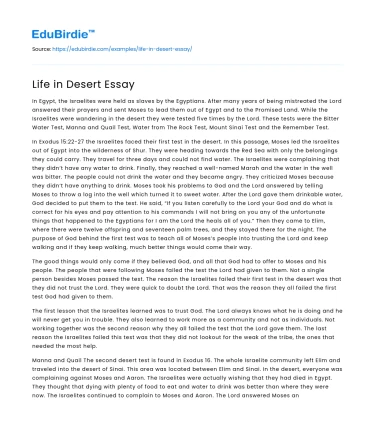
Most popular essays
Dubai is perhaps the best city in the Middle Eastern area, yet additionally all through the globe....
- Environmental Issues
Deserts and rainforests are two of the Earth's most distinctive and fascinating biomes. While they...
Art is an essential part of human life. Literature is a part of art. Literature entertains people,...
- Robert Frost
The poem “Desert Places” by Robert Frost depicts the speaker’s lonely mind in a deserted place,...
When most people picture a desert, they imagine a blisteringly hot sea of sand, devoid of any...
The selected research is focused on the investigation of factors impacting healthy dietary habits...
Food deserts are defined as areas of relatively poor access to healthy and affordable food. This...
A biome mainly referred to an ecosystem where places share similar climates. It comprises all...
- Conservation
- Conservation of Forest
In recent decades, human development by means of industrialisation and colonisation has acted as a...
Join our 150k of happy users
- Get original paper written according to your instructions
- Save time for what matters most
Fair Use Policy
EduBirdie considers academic integrity to be the essential part of the learning process and does not support any violation of the academic standards. Should you have any questions regarding our Fair Use Policy or become aware of any violations, please do not hesitate to contact us via [email protected].
We are here 24/7 to write your paper in as fast as 3 hours.
Provide your email, and we'll send you this sample!
By providing your email, you agree to our Terms & Conditions and Privacy Policy .
Say goodbye to copy-pasting!
Get custom-crafted papers for you.
Enter your email, and we'll promptly send you the full essay. No need to copy piece by piece. It's in your inbox!
Paragraph on Desert Life – by Jenny
Introduction:
On hearing the word Desert, dry barren land, which is totally isolated and too hot to be in, is what comes to our minds first.
However, that is not the complete or exact picture of a desert. Though deserts are barren lands where life is almost impossible, there are places where life does exist and is not that barren as it is anticipated.
What is a desert and life in a desert?
ADVERTISEMENTS:
Desserts are usually formed when some parts of the land does not receive rainfalls, which leads the land to be very dry and hot and almost difficult for life to sustain. There are almost two kinds of desert: the hot deserts and the semi deserts. Hot deserts are mostly found near to the equators and they are very hot places. These deserts are usually full of sand, like the one that you see in Egypt. The other kind of desert which is the semi desert is mostly like a scrubland and is commonly seen in the western side. Usually a dessert gets formed when there is no adequate amount of rainfall on that particular area.
Life at the desert:
Though it is presumed that only some certain species like the Camel, lizard and snakes are found in the deserts, the actual vary. Apart from these animals, there are many others too that live in deserts like the scorpions, antelopes, boars, mule deer, peccaries, foxes and many more. These animals that one finds in the deserts, have adapted themselves to live in there and have learnt to conserve food, water and energy to survive in there.
Apart from the animals, there are also some plants that are seen to grow in the deserts, of which the Cactus is the most common one. The other often seen plant is the ocotillo, which even bear flowers in the deserts. Plants are so well adapted that they know when to blossom, store water and keep themselves safe from this harsh weather.
Journey through deserts:
Though much is heard and learnt about deserts, travelling through a desert is one difficult job. A lot of preparations needs to done, or else, surviving the heat and scarcity of water is totally questionable. Dehydration, sunstroke, and worst of all snake bites are the common disasters faced while travelling through deserts. One needs to be well equipped to face these situations, if one has to cross a desert during a journey.
Conclusion:
Though deserts seems to be a lonely place, people now have started expedition down in these like desert safaris and more where large vehicles are used to drive in the great sand dunes and make a trip that is truly adventurous.
Though there are many places that have the deserts, one could get out from these barren, hot lands with proper planning and care and also understand on how to adapt oneself in such challenging situations.
Related Articles:
- Paragraph on Camel – by Anand
- Paragraph on Deserts and Forests in India – by Rajan
- Paragraph on Life without Water – by Rajan

Geography Revision
GCSE, AS and A Level Geography Revision
Human life within deserts
Gcse geography resources.
Are you looking for high-quality GCSE Geography resources? If so, you can save yourself a lot of time by downloading our modules below.

Compatible with the following exam boards

Deserts are quite inhospitable but still has been inhabited by different groups.
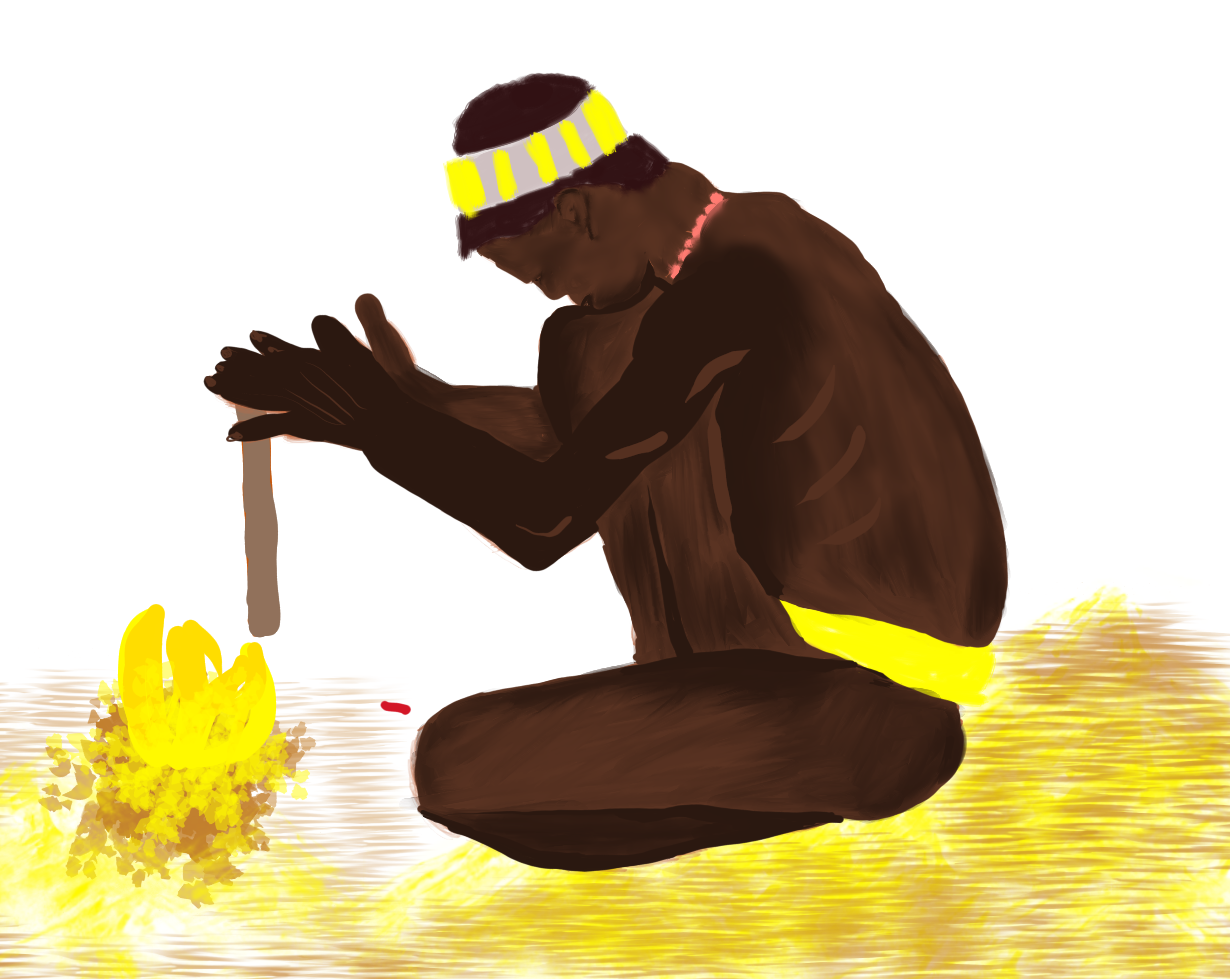
The environment of the desert offers an extreme environment for them. The lack of water, food and other basic means of living are not easily accessible. Still, some civilizations have attained quite high living standards, like that of Egypt and some are going well enough to spend their life here, like Bedouin Arabs. The Bindibu of Australia and the Bushmen of the Kalahari desert are still quite primitive in terms of living their lives and are barely surviving.
They show how life people lived life in the Old Stone Age.
Here, we will discuss the main desert groups under the following categories:
The hunters and collectors.
The Bindibu and the Bushmen tribes are the most famous tribes as hunters and gatherers. These tribes live nomadic life and hunt and gather food for survival. They do not grow crops and also do not domesticate animals. Poisoned arrows, traps, spears and snares are their weapons. The extreme climate has made them adapt to the most extreme conditions and have increased their endurance.
They are very much skilled in capturing the prey and can be quite patient. These tribes also walk and run a long distance to catch injured animals. They often hunt antelopes and other small animals. Rodents, insects, and lizards are often collected by women and children. They also collect honey, grubs, and grass. The collection of water requires great skill. For this, the dew is collected from the leaves in the early morning, and then this carefully collected water is stored in the shells of the Ostrich. A hollow reed is used to suck the water from the ground. Bushmen wear animal flesh as clothes or even remain naked.
They travel in small groups like family and stay together in Sherms. A Sherm is a hole dug beneath a thorn tree which is surrounded by bushes. The fire is lit in the night to keep them warm. The Aborigines or Bindibu of Australia are more or less similar to the Bushmen tribe. They are thin and dark but not weak. They are quite skilled at tracking, and some of them even use wooden boomerangs or throwing sticks and spears for hunting and safety. The domestication of Dungo which is a wild dog is common as it assists them in finding rabbits, birds, and kangaroos. The grass, roots, berries, and seeds are collected by women and is used as supplements in their diet. They also move in groups with small families.
The nomadic herdsmen
This is a much more advanced group of desert tribes who survive with the help of livestock. Instead of walking, they ride on animals and protect themselves from the heat of the sun and stormy conditions of the desert through proper clothing. The Bedouin of Arabia stay in tents and ride on horses; the Tuaregs are the camel riders of the Sahara, and the Mongols of the Gobi desert herd their yaks riding on the horses. Mongols live in tents called yurts.

The Bedouins are one of the best examples of the nomadic herdsmen. Not only they survive on the livestock but are also involved in the trade with the caravan merchants and the people near an oasis. They migrate from one area to another in search of food and water almost all around the year. The animals are the most precious wealth they have and which help them survive the extreme climate of the desert. They domesticate sheep, goats, and camels and in some cases a few horses too. The animals provide them milk, meat, and clothing.
The skin of the animals is used for leather which is further used to makes tents, belts, clothing, footwear, and bags for carrying water. The hair and wool extracted from the animals are used for making clothes, rugs, ropes, and carpets. These things are also traded for other necessities of life like beverages, dates, medicines, and firearms.
The Caravan Traders
These traders are travelling merchants. They travel for months across the deserts of Sahara or Turkestan. These traders used to travel at night and were often armed with weapons to protect themselves from robberies. They used to carry a wide range of articles into the remotest interiors of the desert where the demand of their articles was good. Though the articles they sold, brought them a high amount of profit but the risk of getting robbed or killed was equally great.
They used to carry their goods on camels that have a capacity to travel fifty miles a day and can even carry three hundred fifty pounds of the load with ease. The camel also provides milk and hair and can store water for a longer period. With the introduction of modern facilities to travel by air, road, and rail, the role of caravans have decreased to much extent, but in some interior parts of the desert, these caravans still play an important part.
The settled cultivators
Irrigation is indispensable for crops to be cultivated even in the desert. The water for irrigation is generally obtained from dams, rivers, oases or even through a network of canals. The 25 million population in Egypt depend on the Nile river for survival and hence most of the population is concentrated near the Nile valley and delta. The people of Egypt have been using this river for 5000 years.
The Nile tends to overflow in summer, and its overflowed water gets trapped in the basins with raised banks and thus help in irrigation of crops. This is called basin irrigation. This method is still followed by farmers especially for the cultivation of rice and cotton. The contemporary concrete dams that are built on the Nile, e.g., Sennar and Aswan Dams are very effective for large-scale irrigation works.
Other examples of desert cultivators are found near Indus river in near Pakistan, Colorado in the Imperial Valley of California and the Tiger-Euphrates in Iraq. The people generally tend to settle near the oases in deserts. Oases are the depressions of various sizes where underground water reaches the surface. Some of these oases are exceptionally large like that of Tafilalet Oasis in Morocco (about 5, 000 square miles) which support a large population of a big town.
Frequently Asked Questions
How do desert nomadic tribes traditionally adapt to the challenges of living in arid regions.
Nomadic tribes in deserts often move in search of water and forage for their livestock, relying on sustainable practices and extensive knowledge of desert environments.
Explain the importance of desert oasis communities for human settlement and agriculture in arid regions.
Oasis communities provide access to water and fertile land, allowing for agriculture, human habitation, and economic activities in the desert.
What technologies and innovations have enabled modern desert cities to thrive in harsh environments, and what are some examples?
Modern desert cities use advanced water management, desalination, and sustainable architecture to thrive. Examples include Dubai in the UAE and Phoenix in the USA.
How do indigenous knowledge systems play a crucial role in adapting to desert life and conserving desert ecosystems?
Indigenous knowledge includes sustainable water management, plant use, and navigation techniques that are vital for survival and preserving desert environments.
Discuss the environmental challenges faced by desert regions due to urbanization, agriculture, and climate change, and what measures can be taken to mitigate these challenges.
Urbanization, agriculture, and climate change pose threats to desert ecosystems. Mitigation measures include sustainable land use, water conservation, and climate resilience strategies.
Cite/Link to This Article
<a href="https://geography-revision.co.uk/gcse/human-life-within-deserts/">Human life within deserts</a>
"Human life within deserts". Geography Revision . Accessed on August 29, 2024. https://geography-revision.co.uk/gcse/human-life-within-deserts/.
"Human life within deserts". Geography Revision , https://geography-revision.co.uk/gcse/human-life-within-deserts/. Accessed 29 August, 2024.
Life in the Deserts
When anyone speaks of ‘Deserts’, what do you think of? Brownie, sands, sun, camels or maybe an ice-creams? Although both ‘desert’ and ‘dessert’ are different! What we’re talking about is a ‘desert’, sadly the one you cannot eat. To think of it, life in deserts might seem really tough, but is it really? Ali resides in a desert. And he has an interesting story to tell about various kinds of deserts. Let us join him and hear out his stories.
- The Cold desert – Ladakh
- The Hot Desert – Sahara
Customize your course in 30 seconds
Essay on “Desert” for School, College Students, Long and Short English Essay, Speech for Class 10, Class 12, College and Competitive Exams.
Essay No :- 01
Desert is a large area of land that has very little water and very few plants growing on it. Many deserts in the world are covered by send. When we think of a desert, we imagine hot, dry and barren areas without water. It is usually believed that desert is a region that receives very little rainfall. More precisely, a desert is a region where more water is lost through evaporation than it gains from rainfall.
Camels are known as, ‘ship of the deserts’ because they can move across desert sands easily. They are important mode of transportation for people in desert areas. They can eat almost anything and drink from waterholes that are bitter or salty. Waterholes are places in a hot region where animals go to drink water. Usually around the water source, a small area of desert oasis is found. Oases are formed from underground rivers. The water reaches the surface due to the pressure, or due to a special draw-well.
The Sahara in the Middle East is the largest desert in the world. It covers art area of 3,500,000 square miles and has a population of two million people. The Gobi-desert in Asia has the harshest climatic conditions with extreme temperature as low as 40° below the freezing point in winter to 100° Fahrenheit in the summer.
Deserts are areas that receive annual rainfall of less than 250 millimeters. They have rough textured soils due to the influence of weathering. Plants in the deserts are in the form of shrubs or thorny woody. Moreover, animals in deserts have light colour skin and birds have light colour feathers.
In high atmospheric pressure regions, cold and dry air blows from the higher altitudes closer to land. The air is heated by the Sun and this causes low humidity and high ground temperature. Deserts are also formed where there are two mountain ranges on either side. This prevents the ocean air from reaching the land.
Deserts can be classified into four types. Hot and dry deserts are very hot throughout the year. They receive very less rainfall. Plants in such deserts consist of woody trees and ground shrubs. Animals in these deserts come out at night when the temperature is low. Semi-arid deserts are warmer and receive low rainfall. Cacti are their native plants. Lizards and small animals are found here. Coastal deserts have a cool to warm environment. Such climate is suitable for certain plants and other creatures. Cold deserts are sandy in nature. They are formed due to locations in far interior continental regions. The areas of extreme cold climate such as Antarctica and Arctic in two Poles are regarded as cold deserts. In India, Ladakh is considered as a cold desert.
Essay No :- 02
A desert is a place that has few, or sometimes even no, life forms. Sometimes life forms adapt to living in deserts, but conditions tend to be extreme, and survival is challenging. Some deserts can be visited but not lived in. Some deserts are so inhospitable that life as we know it cannot survive in them at all. In terms of rainfall, areas that receive less than ten inches of rain a year are considered to be deserts. Some deserts receive only three or four inches of rain a year. A few places do not receive any rain at all. When we think about deserts, we think about limiting factors. These factors include: Liquid Water: On earth, liquid water is necessary for life. Some life forms survive periods when water is not available by becoming spores or seeds, or by becoming dormant (hibernation). Some plants can survive for many years as seeds. Insects and unicellular life forms can also wait out drought. Sooner or later, however, liquid water is necessary. Survival is essential, but it is not all of life. Without growth and reproduction, life is on hold, not progressing. Salinity can also interfere with an organism’s use of water.
Related Posts

Absolute-Study
Hindi Essay, English Essay, Punjabi Essay, Biography, General Knowledge, Ielts Essay, Social Issues Essay, Letter Writing in Hindi, English and Punjabi, Moral Stories in Hindi, English and Punjabi.
Save my name, email, and website in this browser for the next time I comment.
Desert Ecosystem
Deserts are barren areas of land characterised by extremely high or low temperatures, with low rainfall and scarce or no vegetation.
Deserts are examples of terrestrial ecosystems, which are found throughout the world. Neither all deserts are flat, nor do all deserts have cacti or oases. These are regions with a short rainy season. It is scorching in the daytime, and very cold at night in the desert.
Explore more: Terrestrial Ecosystem
Let us explore more about the types and features of some desert ecosystems.
Types of deserts
Deserts are arid regions with especially low or high temperatures and limited vegetation. Based on the climate condition, deserts are classified into two types – hot deserts and cold deserts.

- The hot and dry desert – Sahara
The Sahara is known as the world’s largest desert, covering over 8.54 million square kilometres. It is the largest, and the hottest desert in the world.
Sahara desert is located in tropical regions, which are 1,000 m above sea level. It covers a huge part of North Africa, and eleven other countries – Algeria, Tunisia, Egypt, Mali, Chad, Niger, Western Sahara, Sudan, Mauritania, Libya and Morocco.
The total area actually measures about 8,600,000 square kilometres, which is 4,800 km approximately from east to west, and between 800 and 1,200 km from north to south.
The climate in this region is extremely hot, sizzling, and dry, and often receives small quantities of precipitation throughout the year.
In this hot desert, the days are scorching. During the day, temperatures will rise as high as 45° C to 50° C, heating the bare rocks and the sand. The nights can be extremely cold, with temperatures going below 0° C, sometimes.
- The cold and dry desert of Ladakh
Ladakh is famously known as the cold desert of India. It is found in the high altitudes of the temperate regions, which lie in the Great Himalayas within the eastern parts of Jammu and Kashmir and located in the western Himalayas region, within Himachal Pradesh in North India.
The altitude in Ladakh ranges from about 3,000 m in Kargil to 8,000 m in Karakoram. Due to its high altitude, the climate remains extremely cold and dry. The day temperatures in summer are just above 0° C and the night temperatures go below –30° C.
The Gangotri glacier along with several other glaciers are found here, along with different rivers flowing through Ladakh. Among the rivers, Indus is the most important river that flows through Ladakh.
In Ladakh, there are very few, tiny patches of grasses and shrubs for animals to graze on. Many poplars, groves of willows and shrubs of the genus Salix are seen in the valleys.
Features and Desert Habitats
The most determining feature of this terrestrial ecosystem is the amount of precipitation it receives, which is the least compared to other ecosystems.
A desert is an arid or bone-dry region of the landscape where there is little precipitation, hence living conditions are unfavourable for both flora and fauna . This ecosystem can exist from the Arctic to the tropics. Not all deserts are hot – some are often windy, while some contain rocks and others have sand dunes. Flora is a very rare but highly adaptive animal species and insects are found here.
The soils of the Sahara desert are low in organic matter and are often biologically inactive. The vegetation in the desert’s ecosystem is generally sparse with scattered concentrations of grasses, cacti, date palms and acacia.
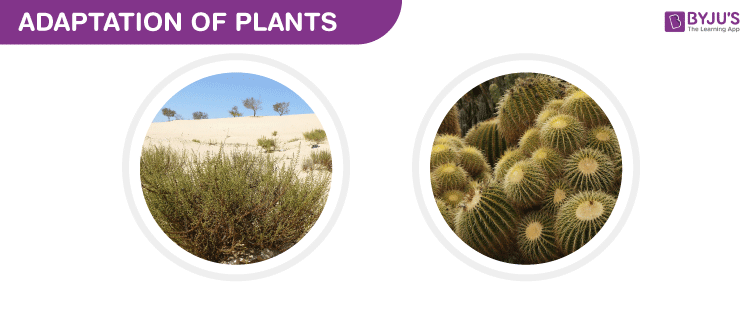
Because of the extreme dryness and freezing cold in Ladakh, the vegetation is sparse. During the summer season, beans, turnips, potatoes, peas are sometimes cultivated. Fruit trees such as apricots, apples, and walnuts bloom in cold deserts.
Camels, foxes, jackals, owls, hyenas, wild goats and sheep, vultures, scorpions, ostriches, yaks, hawks, and desert reptiles including varieties of snakes and lizards, are the prominent animal species (fauna) of this terrestrial ecosystem.

Explore more: Adaptations of Animals In Deserts
This article concludes with an introduction to the desert ecosystem.
To know more about the desert ecosystem, its features, important questions and other related topics, keep visiting our website at BYJU’S Biology .
Leave a Comment Cancel reply
Your Mobile number and Email id will not be published. Required fields are marked *
Request OTP on Voice Call
Post My Comment
Register with BYJU'S & Download Free PDFs
Register with byju's & watch live videos.

Essay on Alone On A Desert Island
Students are often asked to write an essay on Alone On A Desert Island in their schools and colleges. And if you’re also looking for the same, we have created 100-word, 250-word, and 500-word essays on the topic.
Let’s take a look…
100 Words Essay on Alone On A Desert Island
Introduction.
Imagine being alone on a desert island. It’s a place with no people, no buildings, and no noise. Just you, the sand, the sea, and the sky. It sounds scary, but it could also be an adventure.
Life on the Island
Life on a desert island would be tough. You would need to find food, water, and shelter. You might eat fruits, catch fish, and drink rainwater. You might build a hut from palm leaves.
Being alone means facing many challenges. You would have to be brave and smart. You would need to make fire, find a way to signal for help, and keep yourself safe.
Learning and Growing
Living alone on a desert island could teach you many things. You would learn to be independent, resourceful, and patient. You would also learn to appreciate the simple things in life.
250 Words Essay on Alone On A Desert Island
Stranded on an island.
Imagine finding yourself alone on a desert island. It is a place where no one else lives, only you. It can be scary but also exciting. You have nobody to talk to, but you also have the whole island to yourself.
Surviving on the Island
Surviving on an island is not easy. You need food, water, and shelter to live. You can find fruits and nuts on trees, and catch fish from the sea. You can drink rainwater or find a stream. For shelter, you can make a hut using branches and leaves.
Living with Nature
Living on an island means living with nature. You can see all kinds of plants and animals. You can watch the sun rise and set over the sea. You can hear the waves and the wind. It can be very peaceful.
Feeling Lonely
Being alone on an island can make you feel lonely. You can miss your family and friends. You can miss your home. But you can also learn to enjoy your own company. You can learn to be happy by yourself.
One day, a ship or a plane may see you and rescue you. They will take you back home. You will be happy to see your family and friends again. But you will also remember your time on the island. It will be an adventure you will never forget.
500 Words Essay on Alone On A Desert Island
Imagine being alone on a desert island. No people, no buildings, no internet, just you and nature. How would you feel? What would you do? This is a thought that many people find interesting and sometimes scary.
Feeling Alone
The first thing you might feel is loneliness. You are the only human on the island. There are no friends to talk to, no family to hug, no one to share your thoughts with. It’s just you and the sounds of nature. At first, this might be scary. But after some time, you might start to enjoy the peace and quiet. You could spend time thinking, dreaming, and exploring your own thoughts.
Surviving alone on a desert island would be a big challenge. You would need to find food and water to stay alive. You might have to eat fruits or catch fish. You would need to learn how to make fire to cook your food and keep warm. You would also need to build a shelter to protect yourself from the weather. It would be hard work, but it could also be a great adventure.
Exploring the Island
Exploring the island could be fun. You could find new places and see beautiful views. You might see animals you have never seen before. You could climb trees, swim in the sea, or just sit and watch the sunset. Every day could be a new adventure.
Learning New Skills
Being alone on a desert island would force you to learn new skills. You would have to learn how to find food and water, how to make fire, and how to build a shelter. You would also need to learn how to take care of yourself. You might even learn how to make tools or clothes from things you find on the island.
Being alone on a desert island might sound scary at first. But it could also be a chance to learn, grow, and have adventures. You might feel lonely, but you would also have a lot of time to think and dream. You would need to work hard to survive, but you could also have fun exploring and learning new skills. In the end, being alone on a desert island could be a unique and unforgettable experience.
So, next time you find yourself alone, whether it’s on a desert island or just in your room, remember that being alone can be a chance to learn, grow, and have adventures. It might be hard at times, but it can also be a great experience.
That’s it! I hope the essay helped you.
If you’re looking for more, here are essays on other interesting topics:
Happy studying!
Leave a Reply Cancel reply
Your email address will not be published. Required fields are marked *

IMAGES
COMMENTS
The Great Indian Desert of Thar, White Salt Desert of Kutch, and Cold Desert of Spiti Valley are some of the deserts that can be visited for a great desert adventure in India. Types of Desert. In this part of the essay on desert, we will explain four main types of deserts. This will be useful for children to write an essay on desert life.
Paragraph on Desert in 150 Words. A desert is a large area of sand. Deserts are dry and hot areas which receive very less rainfall throughout the year. Deserts are places which have very few plants and trees. Due to fewer trees, the amount of rainfall is also very less. Due to the unfavourable conditions, no agriculture is possible in the deserts.
Desert Life. Despite the harsh conditions, many plants and animals call the desert home. They have special adaptations to survive here. ... 500 Words Essay on Desert Introduction. The desert, often perceived as a barren and lifeless expanse, is in reality a complex and diverse ecosystem. It is a biome characterized by low rainfall, extreme ...
Desert Phenomenology / Experiential Archaeology: This is an archaeological approach that seeks to understand how people live in the deserts, their life experiences, and how they perceive their local environment(s). It includes their sensory experiences of day-to-day living; Desert economy: Deserts have always been vital for resources and ...
Paragraph On Desert: Deserts are fascinating, unique, and challenging ecosystems that cover approximately one-third of the earth's surface. Despite their harsh conditions, deserts are home to a diverse range of plants and animals that have adapted to survive in such a challenging environment. ... You can read more Essay writing in 10 lines ...
As we know, photosynthesis occurs in the leaves, and the openings of the leaves called stomata provide an exchange of gases; however, this also leads to a loss of water in the form of water vapor. Therefore, desert plants have tiny and waxy leaves. The wax prevents water from escaping, and the glossy sheen reflects sunlight.
Deserts remind us of nature's resilience and the ingenious ways life adapts to survive. Paragraph on Desert in 200 words. Deserts are one of the most intriguing biomes on Earth, characterized by their extreme dryness and sparse rainfall. ... APJ Abdul Kalam Essay in 150, 250, 350, 400 & 500 Words; Blood Donation Essay in 150 to 500 Words for ...
1. Overview of the Sahara Desert. The Sahara, often referred to as the "Great Desert," is the largest hot desert in the world, spanning North Africa. Covering approximately 9.2 million square kilometers, it is a vast expanse of sand dunes, rocky plateaus, and barren plains. Table 1: Sahara Desert Quick Facts. Feature.
Even though life can be tough in the desert, it's a unique and beautiful part of our world. Also check: 10 Lines on Desert; Essay on Desert; Paragraph on Desert in 250 Words. The desert is a unique and intriguing place. It's a vast, dry area where rain is a rare visitor. The sun shines bright, making the sand hot during the day, while the ...
Paragraph on Desert Life in 250 Words. Desert life is unique and full of surprises, showing us how life can thrive in the harshest conditions. Deserts are dry, sandy areas where rainfall is scarce and sunlight is abundant. Living in such challenging environments requires special adaptations. Plants, like cacti, store water in their thick stems ...
Many people view the desert as a barren place, tell us about life here. It is true that the Qatari desert looks dusty, empty and quiet. But actually, she hosts 2,000 species of organisms, not counting microbes, half on land and the rest in her coasts and seas. Their activity is imperceivable, because most animals lead a cryptic existence ...
Hot and Cold Deserts The largest hot desert in the world is the Sahara, which is 9 million square kilometers (3.5 million square miles). It isn't the hottest place on Earth, though. That distinction belongs to Death Valley, in California's Mojave Desert. The highest temperature on Earth was recorded there: 56.7 C (134.1 F).
Many deserts were formed 8,000 to 10,000 years ago. Some are superhot in the day. In fact the highest temperature ever recorded on Earth was 134°F (56.6°C) in California and Nevada's Death Valley in 1913. Even though many deserts can reach temperatures of well over 100°F (37.8°C) during the day in summer, they can get cold at night.
Manna and Quail The second desert test is found in Exodus 16. The whole Israelite community left Elim and traveled into the desert of Sinai. This area was located between Elim and Sinai. In the desert, everyone was complaining against Moses and Aaron. The Israelites were actually wishing that they had died in Egypt.
Paragraph on Desert Life - by Jenny. Introduction: On hearing the word Desert, dry barren land, which is totally isolated and too hot to be in, is what comes to our minds first. However, that is not the complete or exact picture of a desert. Though deserts are barren lands where life is almost impossible, there are places where life does ...
Ladakh is a cold desert lying in the Great Himalayas, on the eastern side of Jammu and Kashmir (Fig. 10.4). The Karakoram Range in the north and the Zanskar mountains in the south enclose it. Several rivers flow through Ladakh, Indus being the most important among them. The rivers form deep valleys and gorges.
250 Words Essay on Sahara Desert The Sahara Desert: A Brief Overview. The Sahara Desert, stretching over 3.6 million square miles across North Africa, is the largest hot desert in the world. ... Sahara, though sparse, have a rich cultural history. The Berbers, Tuaregs, and other ethnic groups have adapted to the desert life, their culture and ...
They show how life people lived life in the Old Stone Age. Here, we will discuss the main desert groups under the following categories: The hunters and collectors. The Bindibu and the Bushmen tribes are the most famous tribes as hunters and gatherers. These tribes live nomadic life and hunt and gather food for survival.
Although both 'desert' and 'dessert' are different! What we're talking about is a 'desert', sadly the one you cannot eat. To think of it, life in deserts might seem really tough, but is it really? Ali resides in a desert. And he has an interesting story to tell about various kinds of deserts. Let us join him and hear out his stories.
Essay No :- 02 . Desert. A desert is a place that has few, or sometimes even no, life forms. Sometimes life forms adapt to living in deserts, but conditions tend to be extreme, and survival is challenging. Some deserts can be visited but not lived in. Some deserts are so inhospitable that life as we know it cannot survive in them at all.
A trip to the desert is not just a physical journey but also a spiritual one. The stark beauty and the extremes of the desert prompt introspection and self-reflection. The desert's vastness and silence provide the perfect backdrop for contemplating life's big questions. In conclusion, a trip to the desert is a unique experience that leaves ...
The hot and dry desert - Sahara. The Sahara is known as the world's largest desert, covering over 8.54 million square kilometres. It is the largest, and the hottest desert in the world. Sahara desert is located in tropical regions, which are 1,000 m above sea level. It covers a huge part of North Africa, and eleven other countries ...
Being alone on a desert island might be hard, but it could also be a chance to learn and grow. It's a thought that makes us think about what really matters in life. 250 Words Essay on Alone On A Desert Island Stranded on an Island. Imagine finding yourself alone on a desert island. It is a place where no one else lives, only you.